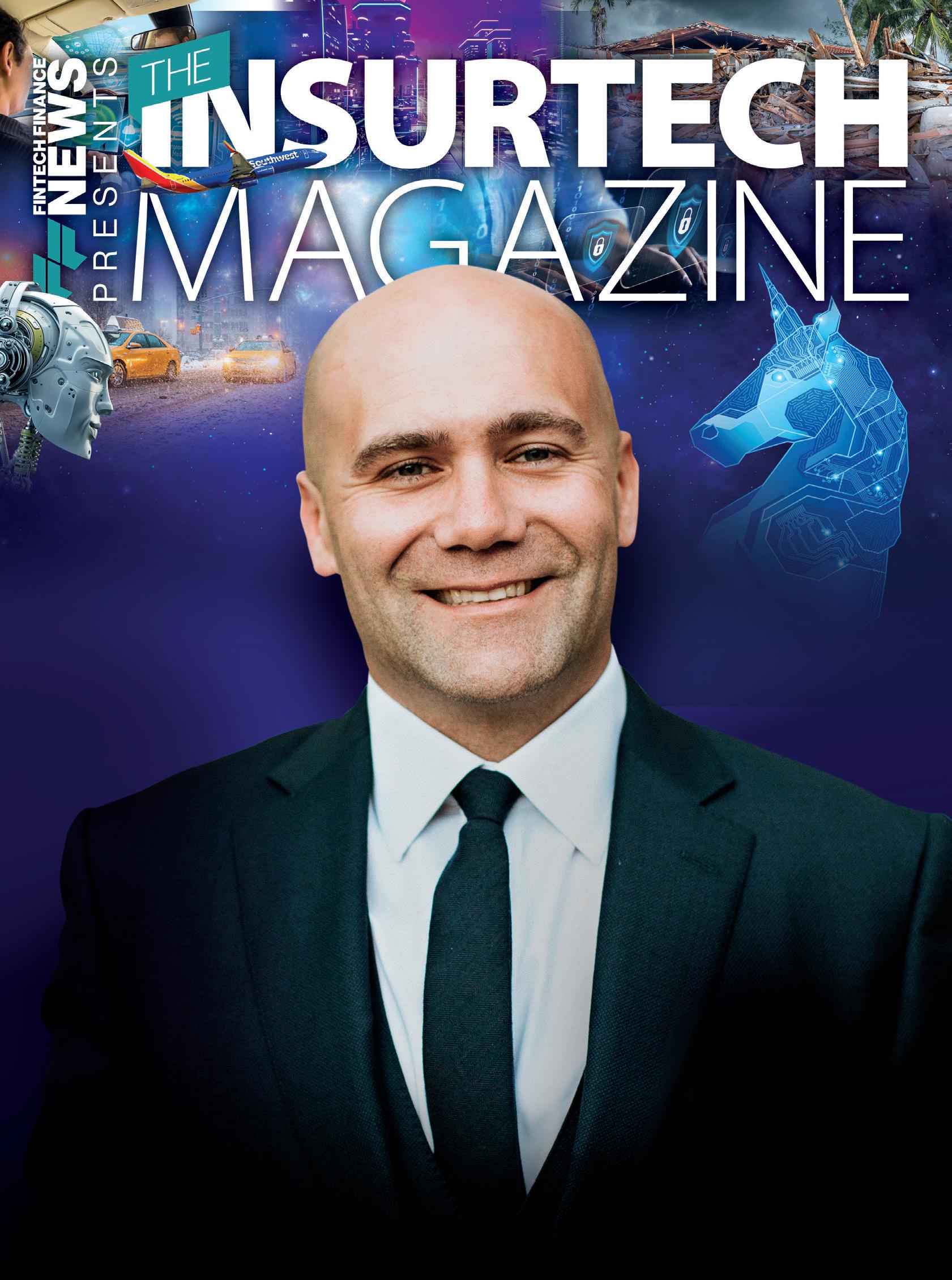










ISSUE#9 InsureTech Connect ● InsTech ● Alchemy Crew ● Insurtech Gateway INSIGHTS FROM 2023 ANOTHER YEAR OF PERMACRISIS? YOUR PREDICTIONS FOR HOW IT UNFOLDS PARA TROOPERS VITESSE AND THE HERO TECH THAT’S CHANGING LIVES REASSURING THE REINSURERS SUPERCEDE’S TOP TIPS FOR NAVIGATING A TOUGH MARKET HOWDY PARTNERS! BUILDING RELATIONSHIPS IN OHIO WHAT SUCCESS SOUNDS LIKE Clearspeed’s Alex Martin on reconciling speed and trust with voice analytics COVER FEATURE Insurtech Insights ● Socotra ● Resilience Cyber ● Matic ● InsurTech Scout ● Nationwide

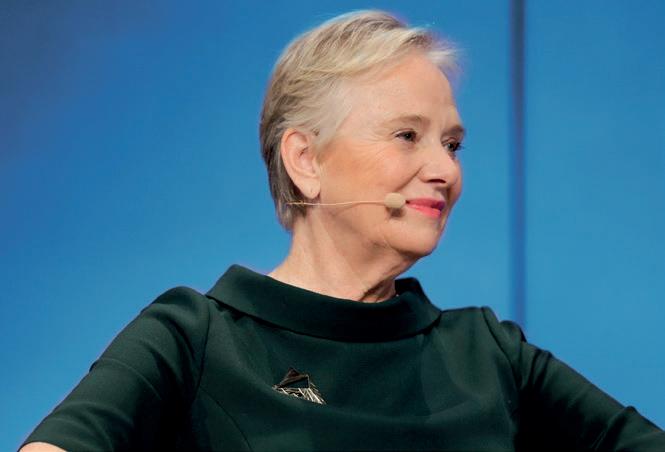










PARIS ∞ NETWORKING 10 0 SPEAKERS 50 0 PAR TICIPANTS 4 0 COUNTRIES PARIS ∞ NETWORKING 10 0 SPEAKERS 50 0 PAR TICIPANTS 4 0 COUNTRIES PARIS ∞ NETWORKING 10 0 SPEAKERS 50 0 PAR TICIPANTS 4 0 COUNTRIES PARIS ∞ NETWORKING 10 0 SPEAKERS 50 0 PAR TICIPANTS 4 0 COUNTRIES PARIS ∞ NETWORKING 10 0 SPEAKERS 50 0 PAR TICIPANTS 4 0 COUNTRIES REGISTRATION IS OPEN parisfintechforum.com EARLY BIRD 20% OFF until 31/03/2023 A COLLECTION OF EXCLUSIVE EVENTS & DIGITAL CONTENT THROUGHOUT THE YEAR
THEINSURTECHVIEW

Those of a certain age might remember UK insurer Commercial Union’s TV campaign, which promised ‘never to turn a crisis into a drama’.


Well, the crises have certainly been multiplying over the intervening 40 years, so much so that Collins Dictionary made ‘permacrisis’ – an extended period of instability and insecurity – its word of 2022. And, if there’s one thing our guest forecasters are agreed upon in this issue, it is that isn’t going to change any time soon.
But if permanent, global disruption is the ‘new normal’, then the implications for insurance are really quite severe. The evidence is already being seen in the reinsurance market, as Ben Rose, co-founder and president of Supercede, neatly articulates on page 14. He makes the case for cedents with quality data being able to protect themselves from the worst of reinsurance pricing cycles.
As our teaser quote on the spine of this issue says: “The most valuable commodity I know of is information.” And there isn’t one technology showcased in this edition that isn’t fundamentally based on that truth: it all requires data. To leverage it, more partnerships are evolving in the insurance supply chain, prompting many startups to shift from B2C to B2B models.
Good examples of partnerships at work can be found among the startups and established institutions clustered in Ohio (see page 14). As Angie Klett from Nationwide in Columbus says: "We think we can make the experience and futures for our customers and businesses better when we work together.”

And co-operation tends to take the drama out of any number of crises.
Sue Scott, Editor
Last issue’s spine tingler, 'Screw it, let's do it’ is a quote by British billionaire entrepreneur, Sir Richard Branson.
3 INSURTECH MAGAZINE: CONTENTS ffnews.com Issue 9 | TheInsurtechMagazine THEINSURTECHMAGAZINE 2023 ISSUE #9 4 Predictions 2023 – Part I From AI to unicorns, industry insiders give us their forecasts 6 Accelerating the speed of trust How do you accelerate straight-through processing while simultaneously identifying claims that shouldn’t be paid? Clearspeed CEO Alex Martin learned his lessons on the battlefield to resolve that conflict once and for all 12 Facing into the ‘storm’ Fresh from a presentation in Davos, where the possibility of a critical global cyberattack was made a top-level threat, Resilience Cyber tells us how insurers, business and government might prepare 14 We’ve got you covered As customisation and embedded services shape a new era for insurance, companies in Ohio are looking to build partnerships like never before 20 Disruption & dilemmas Merlin Beyts, Head of Content for ITC DIA Europe, asks if 2023 is the year for insurance businesses to accelerate or consolidate
Mission critical Payments provider Vitesse is
a new wave of parametric insurers deliver funds where they’re needed, when they’re needed 28 The high five
Woods,
and
Socotra, sets out the key steps for launching a successful insurance product 30 Lessons from a really hard market
year and considers
better insight into timely data could address reinsurer concerns going forward 32 Difficult conversations
hostage negotiator to insurtech entrepreneur, Tara Shelton’s career has been one long pursuit for the truth 36 Predictions 2023 – Part II More insights from Lisa Wardlaw, Jeff Shi, Bradley Collins and Majit Rana 38 Flush with ideas
Thomas salutes a product that could give insurers some (very private) clues to our health
24
helping
Dan
Founder
CEO,
Ben Rose from reinsurance platform Supercede, looks back over a tough
how
From
Stuart
All Rights reserved. No part of this publication may be reproduced, stored in a retrieval system or transmitted in any form or by any means, electronic, photocopying or otherwise, without prior permission of the publisher and copyright owner. While every effort has been made to ensure the accuracy of the information in this publication, the publisher accepts no responsibility for errors or omissions. The products and services advertised are those of individual authors and are not necessarily endorsed by or connected with the publisher. The opinions expressed in the articles within this publication are those of individual authors and not necessarily those of the publisher. EXECUTIVE EDITOR Ali Paterson GENERAL MANAGER Chloe Butler EDITOR Sue Scott PRODUCTION Taylor Griffin HEAD OF CONTENT Douglas Mackenzie HEAD OF MARKETING Ben McKenna CONTACT US ffnews.com DESIGN & PRODUCTION www.yorkshire creativemedia.co.uk ART DIRECTOR Chris Swales PHOTOGRAPHER Jordan “Dusty” Drew ONLINE EDITOR Lauren Towner ONLINE TEAM Joshua Hackett FEATURE WRITERS Alex King Sean Martin Sue Scott Frank Tennyson Stuart Thomas Fintech Finance is published by ADVERTAINMENT MEDIA LTD. Pantiles Chambers 85 High Street Tunbridge Wells, TN1 1XP ACCOUNTS TEAM Jacob Bruce Tom Dickinson Nicole Efthymiou Emillie Snelgrove VIDEO TEAM Lewis Averillo-Singh Alexander Craddock Max Burton IMAGES BY www.istock.com PRINTED BY Print it 24 seven "PROUDLY NOT ABC AUDITED"
KEY TAKEAWAY: No one’s handing over the underwriting pen to a machine this year [but] ChatGPT could fundamentally change the nature of risk assessment 2023

will see the survival of the fittest. Seven years on from when the term ‘insurtech’ was coined, Darwin’s law of evolution is starting to play out in insurance. Successful startup survivors have set investors’ expectations through cautious optimism and are now evolving into established scaleups with real customers, revenue and validated products.

On the other-hand, some of the companies that promised large and fast returns in order to raise very large (in excess of $100million) funding rounds, or those that
went to the public markets early through an IPO in 2020 or 2021, will have to work very hard to keep up with their investors’ expectations. Not all will survive.
We’ll be hearing more about intelligent augmentation. This is the way to combine the skills of insurance professionals with new data sources and analytics that are embedded seamlessly in the workflow. We’ll see less need for re-keying data and maybe even better adoption around global data standards. Most technology companies are going to be more cautious about claiming to have an all-conquering AI solution; no one is going to be disrupting underwriters or claims professionals in 2023. Humans will still be needed ‘on the loop’ if maybe less ‘in the loop’, but no one’s handing over the underwriting pen to a machine this year.
PREDICTIONS: PART 1 4 TheInsurtechMagazine | Issue 9 ffnews.com
We asked industry insiders and friends of The Insurtech Magazine to give us their best guess as to how things will pan out over the next 12 months
MATTHEW GRANT , PARTNER AT INSTECH
We expect to see more brands creating products specifically because of online communities Accenture Life Trends 2023 report
KEY TAKEAWAY: 2023 will be the year for radical tech models
AN INSURANCE INNOVATION EXPLOSION
For those looking to uncover new lines of business through startups, we are already seeing signs that 2023 will be the year for radical tech models. Metaverse, NFT, crypto natives, clean tech, climate tech, algorithm failure, battery lifecycle insurance and quantum computing AI will be on the insurtech VC radar.
VENTURE INVESTMENT SLOW-DOWN
Decisions will take longer and due diligence will be tougher, as caution turns into process for VCs and corporate investors.
INSURER APPETITE: A TALE OF TWO MINDSETS
As ever, there will be two camps. Those who will materialise their innovation efforts into new products this year; and those who will retreat from insurtech to core business activities. We think the former will win out in the long run, having a front-row seat on innovation in the sector.
STARTUP SUCCESS More planning and leaner operating models will be needed for founders to succeed in 2023. Forged in adversity, this year will see the birth of businesses with strong foundations.

There is one big exception to the potential radical shift in the use of AI. ChatGPT from Open AI could be the biggest step forward for finding information since Google Search appeared 20 years ago. It’s passed an exam at The Wharton Business School and - if reliable, comprehensive data sets were available – ChatGPT could fundamentally change the nature of risk assessment.
We’ll see the return of the insurance innovator. Many insurers got burnt with their early experiments in building incubators and investing in startups over the last eight years. There is a re-emergence of a corporate focus on innovation and developing digital strategies. Companies such as Liberty, AXA XL, QBE, MAPFRE, HDI and Chubb all now have very senior leaders with roles such as chief digital strategy officer, able to influence and engage both the business users and the decisionmakers. Dawn Miller, the recently appointed
KEY TAKEAWAY: Creators’ activities bring opportunities and unique risks… We will see new products and services emerge to protect brands and creators
2023will see several fundamental drivers affecting the next wave of evolution.

DE-UNICORNIFICATION Fintech unicorn births steadily declined in 2022, sinking to a low of five in Q4 – an 87 per cent drop, compared to Q4 2021, according to CB Insights’ recent State Of Venture report. We counted 252 unicorns in 2022, compared with 538 in 2021. Despite this decline, 2022 was still the second-highest funding year for US fintech startups. Insurtech investment, meanwhile, dropped 53 per cent, and M&A exits reached a new high, rising 40 per cent in 2022 to 81 deals. Companies that want to achieve the magic $1billion status will be required to support their projections with well-defined unit economics and profitable trajectories.
THE CREATOR ECONOMY As of January 2023, more than 4.9 billion people (62 per cent of the world’s population) are using social media, and creators have learned to fulfil these users’ needs. As of 2022, the creator economy market size was estimated at $104.2billion, more than double its value in 2019. Creators’ activities bring opportunities and unique risks, such as reputational damage and the possibility of creators becoming the subject of legal disputes. We will see new products and services emerge to protect brands and creators.
CYBERSECURITY There have been several notable cybersecurity breaches in recent years. These attacks have resulted in the loss of sensitive information, financial losses for businesses, and damage to an organisation's reputation. As our hybrid work lifestyles increase, this level of risk will likely remain the same in 2023.
commercial director of Lloyd’s, has set the goal for the Lloyd’s Lab to become the world’s best insurance innovation hub. Maybe it already is. Collaboration between insurers and their commercial corporate clients will finally deliver benefit in the area of risk management, or what is known as ‘predict and prevent’. Chubb and AXA XL have been among the leaders in this field and last year AXA announced the launch of a strategic initiative built around its Digital Commercial Platform. This brings together several of the insurer’s existing smart services, including real-time data and analytics collected through satellites, drones and sensors.
These services are combined with the work being done in AXA Climate and other parts of the business. The resulting solutions are now being offered to the insurer’s clients. Losses reduce, claims go down. Everyone wins.
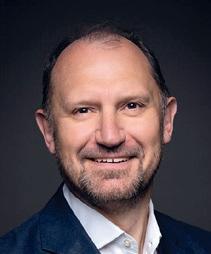
5 ffnews.com Issue 9 | TheInsurtechMagazine
theClosing gap will require insurers to think and act differently – launching new products and services in innovative ways EY Global Insurance2023Outlook
Insurers will increasingly‘unbundle’their value chain and focus on sources of distinctive value creation McKinsey,Global InsuranceReport2023: ReimaginingLife Insurance
➤ Turn to page 36 for forecasts
ROBERT LUMLEY, CO-FOUNDER, INSURTECH GATEWAY
from Manjit Rana, Bradley Collins, Lisa Wardlaw and Jeff Shi
SABINE VANDERLINDEN, CO-FOUNDER AND CEO AT ALCHEMY CREW
ACCELERATE THE SPEED OF TRUST
Speed and security are often seen as being mutually exclusive in claims processing…Clearspeed CEO and Co-founder Alex Martin learned his lessons on the battlefield to resolve that conflict once and for all what voice could reveal about a person and whether what they say could be relied on. He cites the example of British and American forces on missions in Africa and the Middle East and their need to liaise with local nationals. How could they form trusted relationships when there was no immediate way to vet a contact and establish confidence in what you were being told?
Faster processing is a common goal for insurers because it improves customer experience at key touchpoints in the insurance lifecycle, such as first notice of loss (FNOL).
The claims process is always stressful and customers expect a quick resolution, so the better the service at this moment of truth, the happier they are. Faster processing is good for retention and reputation, but speed, especially in high-volume claims situations, can increase the likelihood of fraud.
The winning formula behind Clearspeed, a voice analytics company whose AIenabled technology can accelerate lowrisk transactions while flagging others with remarkably high accuracy rates, addresses that dilemma for insurers.


Launched in 2016, Clearspeed is based in San Diego and was set up to solve the challenge of how to objectively screen people, in any language, at scale.
Alex Martin, CEO and co-founder, drew on his background in the armed forces, combined with his experience of working with talented voice technology specialists, as the inspiration for Clearspeed’s technology.

“The problem we faced in combat zones, particularly in the special operations field, was how to operate efficiently in environments where trust was imperative, but the data to trust people was incomplete,” says Martin, who served nearly 20 years in the US Marine Corps in active duty and as a reserve. “Operating across different languages can create uncertainty, which undermines trust, and trust is something you must establish quickly in military situations and hostile regions.”
Martin explains that in exploring ways to trust people faster, they focussed on
“You might think a lie detector would be the simple answer,” says Martin. “But this isn’t a lie detection problem – this is a question of risk identification; lie detectors don’t scale, plus the technology wasn’t available to us in conflict zones such as Iraq. Lie detectors help you make binary assumptions, either lie or no lie, in one-to-one situations. But we faced risk identification and risk stratification problems and needed to cover more ground at speed. The only way was to come at this problem from a different angle.”
recommending you take a closer look, you can safely move people ahead.
The quest to build trust led to the development of the Clearspeed technology and the ability to apply the metal detector concept across industries – including insurance.
“Our product suite is based on the need for speed with safety,” says Martin. “Instead of trying to find the bad actor, and make a final determination as such, which is what a lie detector does, we wanted a system to quickly clear all the low-risk people, while identifying the few who needed further scrutiny in the form of a risk alert, to be mitigated or escalated. Traditional logic says you should slow things down to tighten security whereas we’re accelerating the vetting process with technology that’s designed not to find the ‘bad’, but to rapidly clear the ‘good’.”
So, how does Clearspeed’s technology work? Martin is keen to underline that it’s not voice recognition and has nothing to do with the growing field of biometrics. Instead, it’s based purely on the assessment of vocal characteristics associated with risk.
“It’s an important distinction,” he says. “We’re analysing the voice, based on a series of automated questions to which people provide ‘yes’ or ‘no’ responses. Their answers provide information that indicates low, potential, or high risk.”
Rather than a lie detector, Martin says that the Clearspeed model is akin to a metal detector: it clears large volumes quickly and efficiently, while producing risk alerts for follow up. It clears the way and eliminates people from the search if there is nothing of interest or concern, he says. Unless there is an alert
It’s a four-step process, beginning with the telephonic questionnaire. The speech is converted into Clearspeed’s unbiased and language-independent data model. The data is then analysed to determine the presence or absence of specific vocal characteristics associated with risk. Next, the risk is scored from low to high and the results are provided via an API or an app.
“Our technology captures detectable
COVER FEATURE: CLEARSPEED 6 TheInsurtechMagazine | Issue 9 ffnews.com
Traditional logic says you should slow things down to tighten security whereas we’re accelerating the vetting process with technology that’s designed not to find the ‘bad’, but to rapidly clear the ‘good’
and quantifiable characteristics that are universally known to be present in speech,” says Martin. “And that’s not down to the AI; it’s because our system knows exactly what characteristics to look for, and we know exactly what’s noise and what’s a reliable signal. The AI is simply conducting the evaluation of low, medium, or high risk against our extensive global data set.”
Martin adds that the reservations people have about AI, such as creep or bias, are not a concern with Clearspeed because it functions more like a heart monitor, identifying something that is not subjective. In other words, the signal is either there or it isn’t, and if it is, to what extent. And the voice analysis requires no additional data, like race, gender, or location, and is language agnostic as well, says Martin. Depending on the product, and the application, he claims very high accuracy and flagging precision for the
technology in any real-world situation where screening is required.

“The questions are tailored for the element of risk that you're trying to identify,” he says. “ We create simple questions, directly related to each customer, for an experience that’s personalized, accurate and rapid. We’re not looking to complicate a process that traditionally proves stressful for customers. Just like the heart monitor tracks signals and provides alerts when there is a patient issue and additional care is required – which a medical expert then determines – Clearspeed voice analytics alerts to potential high risk to enable claims experts to follow up, but most importantly, has cleared all the low-risk claims with unprecedented speed.
“Clearspeed is focused on helping our clients make informed decisions, not making decisions for them. This is all about making bold decisions that benefit the customer with profound confidence,” says Martin.

There are three Clearspeed insurance products. Clearspeed Express is designed to accelerate FNOL. The automated question-and-answer process enables insurers to triage claims at scale, boosting straight-through processing so that low-risk claims can be paid without any unnecessary delays, while high-risk claims can be flagged for a closer look.

7 ffnews.com Issue 9 | TheInsurtechMagazine
Resolving tension: Clearspeed’s Alex Martin
“Clearspeed Express fast-tracks decisionmaking,” says Martin, “reducing the impact on your operations and giving adjusters more time to focus on high-priority claims. Our cloud architecture makes it quick and easy to integrate Clearspeed alerts into any claims process via any customer touchpoint.”
For straight-through processing (STP) to work efficiently, it needs to start with claims triage at FNOL, because the vast majority of claims are legitimate and don’t need to be questioned; good actors should not suffer because of unnecessary friction. However, many insurers have yet to implement STP at this crucial stage, despite the growing use of techniques such as natural language processing (NLP) to better understand customers. The problem with NLP systems, though, is that they require large amounts of data. In contrast, Clearspeed’s automated questionnaires require very little data to draw accurate conclusions.

“The questions we pose at FNOL are very simple,” says Martin. “For instance, ‘were you on a mobile phone when the incident occurred?’ or ‘were there any passengers in your vehicle when the incident occurred?’. Based on the responses, the risk is assessed, and an overall risk score is provided. If the score is satisfactory, the claim can move forward.”
Clearspeed Precision is a tool that enables insurers to gain greater accuracy when assessing claims beyond FNOL. It
uses the same voice questionnaire approach and light touch to achieve a positive customer experience.
“Clearspeed Precision goes a little deeper and more granular,” says Martin.
“So, instead of the top-of-funnel triage, signalling clear or alert, this is now saying, ‘what aspect of this needs further investigation?’. It builds on the ‘yes’ or ‘no’ format with supplementary questions to either eliminate false positives or escalate to the fraud team.”
Clearspeed Surge is the newest addition to the product suite. Launched at the end of 2022, it enables insurers to assess claims risk quickly and accurately for catastrophic, weather-based events. Operational teams can instantly determine next steps and move customers straight through to payment at critical times if there are no issues. By fast-tracking low-risk customers, Clearspeed Surge maintains Clearspeed’s objective of gaining trust, faster.
“During a ‘surge’ event, meaning anything that’s not routine, call volumes can increase more than 50 times,” says Martin. “And with catastrophic events, the risk of opportunistic claims fraud is far greater. For instance, when hurricane Ian devastated many areas of Florida, there was
While Martin emphasises that Clearspeed should be seen to enhance customer experience and operational efficiency through straight-through processing, and therefore is not a dedicated anti-fraud platform, it does indeed result in better fraud prevention. With speed comes security. That might seem counterintuitive but it’s a logical outcome of Clearspeed’s approach. Furthermore, the questionnaire format helps to deter potential fraudsters in the first place.
“Fraud is not only on the rise with disaster-related or weather-related events,” says Martin. ”It’s a growing problem across all types of claims, and fraud strategies are continually evolving.”
The impact that Clearspeed is having is evident from customer metrics. Martin says early adopters are seeing big gains in operational efficiency and customer experience, while fraud rates are dropping.
“One of our first customers, an auto insurer in the Americas, has significantly accelerated its claims payments,” says Martin. “In some cases, it’s reduced claims processing from a month to just one day. In addition to gains in efficiency and customer experience, this insurer also identified nearly $1million in savings on fraud losses.

zones
a big increase in attempted fraud and the US Department of Justice had to issue a fraud warning.

“If an insurer gets flooded with tens of thousands of calls a week and doesn’t have the capacity to meet demand, Clearspeed Surge can step in and help triage the influx of new claims. It sits in the cloud and easily integrates with existing systems and offers round-the-clock support. When insurers face this increased demand and struggle with effective fraud controls, trust – and ultimately the customer experience – suffer. The challenge is confidently enabling straight-through processing at first notice of loss, which is where we provide the solution.”
“We’ve also seen some good results in the UK, with one insurer reducing claims
processing from 22 days to five days, while another succeeded in pushing injury claims withdrawals at the special investigative unit stage from zero to 30 per cent”.
Martin says that Clearspeed has no direct competitors. While there are many providers who offer risk tools, some of which may be complementary, no one is covering the voice assessment angle in the same way. Given the interest and successful uptake from insurers so far, he believes there is plenty of scope to develop voice technology in other areas.
COVER FEATURE: CLEARSPEED 8 TheInsurtechMagazine | Issue 9
Building trust: The Clearspeed technology was inspired by experience in conflict
When insurers can’t cope with the demand and struggle with effective fraud controls, customer experience and trust suffer



“I think there is incredible potential for growth,” he says. “First, by developing end-to-end technology to help with underwriting through to claims, which will strengthen customer relationships and retention. The trust factor is very important, and if customers have consistently good scores across all touchpoints, it may help to lower premiums and further boost customer experience.
“Secondly, voice and automated interactions can lift customer support to another level and provide a real-time service when customers need it most. For example, for repairs following a car accident. Above all, Clearspeed is showing that prioritising customer experience also has benefits for fraud prevention.”
Although Clearspeed’s focus has been claims, Martin says the voice technology could also be used at the quote stage to accelerate onboarding and help
determine premiums. As for adding visual technology to support voice, he says that’s not part of the Clearspeed strategy.
“We know what we’re good at,” he says, “and that’s providing voice technology and developing new use cases for it. We can partner with others and integrate our services to create an even stronger insurance proposition, but voice is our core business and selling point.”
Social responsibility is very much part of Clearspeed’s business ethos, says Martin, and it’s closely involved in climate change and poverty alleviation. This is partly borne of Martin’s experience working as a team leader for Nuru International, a social venture that helps rural communities in Africa, but also because one of Clearspeed’s board members and first investor Bob King is a co-founder of King Philanthropies. It draws on a team of highly strategic social impact investors who are committed to projects that alleviate
A ‘clear’ case for adoption in Guatemala
Seguros El Roble is a multi-lines insurer commanding more than 20 per cent market share in Guatemala.

It’s constantly reviewing and trialling digital solutions – both customer-facing and in the back office – and it was this open-minded attitude to innovation that led it to a tech show in Las Vegas in late 2019 where Clearspeed, then only three years old, was exhibiting its voice-based analytics technology.
More than 100 companies piqued the insurer’s interest at the show, but only Clearspeed progressed to production, so impressed was it by the simplicity of the solution and ease of integration into its existing fraud detection stack.
Jorge Luis Linares, Seguros El Roble reinsurance project manager, said a solution that could help us confidently assess the risk of fraud in a claim simply by analysing the answers to a handful of yes/no questions ‘was to us like magic’.
“It was easy to implement and the impact was very high. For me, it’s still
kind of magic!” he said during a webinar early last year.
At the time, the insurer had recently implemented the Dutch trust automation platform FRISS and was looking to further enhance the impressive affect that had already had on straight-through processing of vehicle claims.
The technologies are complementary to one other. Every claim is run through FRISS and 90 per cent of them are settled without intervention; for the remaining 10 per cent that receive a ‘red’ or ‘orange’ FRISS score or are a total loss or theft claim, the company activates Clearspeed.
“We are not denying claims based on either the FRISS score or a call with Clearspeed. They’re only a tool to say, ‘we should look into this’,” said Linares.
Most customers – more than 90 per cent – sail through. But applying Clearspeed to the remainder delivered a 31-times return on its investment in the technology during the first year. The results were so impressive that in 2022
poverty and fight climate change. Clearspeed aligns with the organisation’s philosophy and values, especially through products such as Clearspeed Surge, which helps to mitigate the impact of extreme events and supports people in times of greatest need.
“Clearspeed is proud to be developing socially responsible technology with the support of impact funding,” says Martin. “We have a group of incredible investors who want to make a meaningful difference to people’s lives, and that gels perfectly with our values as a technology innovator. It’s about creating products that establish direct value and impact, while retaining their accessibility and quality in use.”
“Our products are helping people every day in insurance and other fields, and we are committed to finding new and socially responsible uses for voice analytics where the risk-speed paradigm must be flipped to favour building bridges not walls.”
the insurer began looking at applying both FRISS and Clearspeed to its health insurance line, too, where the ability to analyse responses to questions such as ‘do you smoke?’ are obvious. And now it will be moving Clearspeed to the top of the funnel, to apply to all claims.
Clearspeed has not only helped identify claims that legitimately need referring to the insurer’s special investigation unit but has also saved it from paying out claims in instances not covered by the policy wording, such as a driver under a certain age being at the wheel of a car or where a driver’s licence has expired.
“In all these cases where we used to pay before we can now say to the customer ‘there is no coverage for that’,” said Linares. “One of the measurements for success for any tech is if you keep using it – and our intention is to keep using both [Clearspeed and FRISS] because they do not replace but complement each other.”

COVER FEATURE: CLEARSPEED 10
TheInsurtechMagazine | Issue 9 ffnews.com
SEGUROS EL ROBLE

How can business, governments and insurers prepare for what some at this year’s Davos summit warned is a ‘gathering cyber storm’? We asked Resilience Cyber, which helped lead the debate among global leaders, to share its views

According to the World Economic Forum’s annual Global Cybersecurity Outlook 2023, 93 per cent of cyber leaders and 86 per cent of business leaders now believe a catastrophic cyber event is on the horizon, which will likely impact them within the next two years.
The Forum put cybercrime/ cyberinsecurity on its Top 10 global risks for the first time in 2023, as political instability, maturing technologies and a shortage of cyber talent among the ‘good guys’ ramped up the threat – which was described by some at the Forum’s annual gathering in Davos in January as a ‘gathering cyber storm’.
Experts who presented their concerns to world leaders made clear there is not a minute to lose in addressing the risk as digital transformation across industries exposes the world to more vulnerabilities.
Just this month (February), the UK government called for organisations ‘with an interest in software security and digital supply chains’ – aka anyone with a stake in the modern economy – to contribute their views on how best to address software risks to improve resilience to cyberattack. The consultation, which is open until May 1, came as work began in the EU on a proposed Cyber Resilience Act, which seeks to tighten up potential weaknesses in the connected hardware
and software ecosystem. The Act, which will likely take several years to implement, will affect manufacturers, importers and distributors within the single market.
Among those steering discussions around these issues in Davos were representatives from Resilience Cyber, an American cyber risk management and insurance provider, which recently entered the UK.
With the cost of global cybercrime set, by some estimates, to rise from £7trillion in 2022 to £20trillion by 2027, we asked Resilience Cyber’s Rehan Hussain, head of underwriting UK, Europe and Lloyd’s of London, Simon West, cyber advisory lead, and Tom Egglestone, international claims leader, UK and Europe, how insurers, businesses and governments can work together to ward off disaster.
THE INSURTECH MAGAZINE: Premiums for cyber insurance have soared in recent years as insurers (and reinsurers) became concerned about their exposure in the face of exponential increases in attacks. Insurers have also been more selective in the type of cover they take on, or they’ve weighed policies down


with exclusions – so much so that some companies are saying the policies aren’t worth having and it’s better to invest the money in security. What more could insurers be doing to reduce the risks, and therefore reduce the premiums, by, for example, leveraging technology, information and data collection?
REHAN HUSSAIN: The cyber insurance market is still reaching a level of maturity and continues to evolve as market dynamics change. As a product matures, changes in coverage are not uncommon as they are generally in response to new evolving threat vectors and could be viewed as the “growing pains” of a maturing product line.
We believe that rather than thinking about insurance in a silo, companies need to connect their risk transfer strategy to their technical visibility and cyber hygiene efforts to build a holistic strategy. This allows them to incorporate their insurance coverage into their overall cyber resilience efforts.
Carriers should support building cyber resilience by offering services such as enhanced cybersecurity visibility with actionable cyber hygiene

CYBER DEFENCE 12
TheInsurtechMagazine | Issue 9 ffnews.com
recommendations, and continuous engagement throughout the policy. We’ve seen success with building more cyber resilient clients, leading to fewer losses, and a more sustainable insurance market from a price and coverage perspective.
TIM: In November 2022, a Delinea study found that just 30 per cent of cyber insurance holders are covered for critical risks, including ransomware, ransom negotiations and payments. Despite this, Lloyd’s says the global cyber insurance market is likely to grow from $12billion worth of annual premiums today to $60billion over the next five to 10 years as threats increase. How are cyber policies then likely to evolve?
REHAN HUSSAIN: Due to the spike in ransomware activity over the past several years, extortion coverage can be difficult to obtain for companies who have not had proper investment in security controls or have a history of significant losses. Underwriters need to take a different approach to this risk in order to provide more flexibility for clients. Looking at a company’s paper application is a snapshot in time and doesn’t present a full picture of its risk.
are approaching cyber risk in response to the constantly-evolving landscape. This is perhaps most notable in the UK, where the Information Commissioner’s Office (ICO) have introduced changes which they advise is in line with a renewed focus on openness and transparency in dealing with regulated companies suffering data breaches.
UK Information Commissioner, John Edwards, has made clear he wants to move away from what he called the ‘money go round’ of paying fines as the sole regulatory action, while implementing new measures to drive accountability and transparency. One such new measure is the publication of all companies receiving reprimands from the Information Commissioner’s Office (ICO) following a data breach on the ICO website.
It remains to be seen whether this revised approach will yield the results the ICO is seeking: better cybersecurity practices and improved behaviours around data privacy. However, what it does have the potential to do is to increase the risk of litigation and reputation harm for companies affected by privacy breaches.
Claimant firms will likely monitor the ICO website as a source for building potential group actions. For affected companies, it increases the importance of robust pre-incident planning and the value of an effective incident response, ensuring that future litigation risk is taken into account early on alongside other pertinent financial and commercial factors.

enforcement/ government agencies should absolutely be on the agenda, particularly when you look at the success of measures such as the FBI Financial Fraud Kill Chain in the USA.
However, the way in which that relationship works is a work in progress, particularly given sensitivities around the privacy of affected victims. To that end, in the UK we are working with market peers and the National Cyber Security Centre (NCSC) to foster an environment where victims of cyberattacks feel willing and able to engage with law enforcement and government agencies during incidents to deliver better outcomes and improve broader societal cyber resilience.
We are also heavily engaged with the Ransomware Task Force, which called for the cybersecurity community to ‘develop a clear, actionable framework for ransomware mitigation, response, and recovery’ in its initial 2021 report. The basis for this framework is the Blueprint for Ransomware Defense built by Resilience, the Center for Internet Security, and a number of Task Force partners. It includes a subset of these best practices, or safeguards that are most relevant to combating ransomware.
Rather, insurance providers should work to build a partnership with their insureds that can establish a continuous engagement. This allows for greater visibility for the provider to see the valuable work clients are doing in strengthening their security throughout the year and can lead to more flexibility in underwriting. It also allows the insurer to provide intelligence and recommendations for addressing new threats that arise during the course of the policy.
TIM: How will the evolution of cyber regulation in various jurisdictions impact risk and cover?
TOM EGGLESTONE: We have already begun to see shifts in how regulators
Taking a global view, more and more countries are introducing new privacy laws or improving their existing laws. As time passes, a greater and greater proportion of the world's population will become subject to such laws. Firms should ensure that they stay ahead of the game and are informed of the applicable laws affecting their business operations to ensure they remain compliant with those laws and regulations to mitigate the chances of regulatory action or third-party litigation, with the resultant potential reputation harm.
TIM: We’re beginning to see closer cooperation between banks and regional and cross-border law enforcement, trying to steer a path between privacy laws and security in order to not just limit but prosecute fraud. Would you like to see a similar focus on enforcement?
SIMON WEST: Better collaboration between industry and law



Companies need to connect their risk transfer strategy to their technical visibility and cyber hygiene efforts to build a holistic strategy
In April 2021, the Ransomware Task Force launched its seminal report, Combating Ransomware: A Comprehensive Framework For Action. The product was developed with more than 60 experts from industry, government, law enforcement, civil society and international organisations. After several months of work, the report provided 47 specific recommendations and advocated for a unified, aggressive, comprehensive, public-private anti-ransomware campaign. The report’s impact was immediately felt, as governments moved to adopt new policies to empower their agencies to counter the threat, and as organisations found and implemented new tools to keep them and their customers more secure.
13
ffnews.com Issue 9 | TheInsurtechMagazine
We have already begun to see shifts in how regulators are approaching cyber risk in response to the constantly evolving landscape. This is perhaps most notable in the UK
We've got you
‘Change’ is a word we have long-been comfortable with in Ohio – in fact, many famous Buckeyes have driven it spectacularly.
Steven Spielberg, a son of Cincinnati, altered a generation of filmmakers’ approach to cinema; inventor of the lightbulb and countless other technologies, Thomas Edison, shaped all our lives for the better; and, perhaps most famous, astronaut Neil Armstrong, who came from Wapakoneta, Ohio, fundamentally changed the way we view our world.
I’ve always been fascinated by the process of change. It can be challenging, sometimes painful but always interesting and as a senior director at JobsOhio, I’ve seen a lot of it in the financial sector in recent years. The insurance industry, in particular, has undergone something of a revolution here in Ohio.
What’s driving it? To start with, the availability of better data. Insurance companies, for example, can monitor lifestyle habits to inform life insurance provision. Every month, many of us receive an email telling us about our driving habits, which impacts our premiums. It’s almost something we take for granted now.
So, data analytics have been transformative but the real sea-change has been a radical shift in the provider’s relationship with the customer. Insurance has been flipped on its head; a few years ago, the customer was a passive consumer of what the insurance industry wanted or could provide. Today, and increasingly in the future, it’s about designing products and services around what individuals want and need. And in
a post-COVID world, customers want, need and, indeed, expect a personalised, omnichannel experience.
As Adam Erlebacher, CEO and co-founder of Cincinnati’s Fabric By Gerber Life, a one-stop shop to help families ‘master their financial lives’, says: “If you’re a parent and looking to secure your family’s financial future, you don’t necessarily wake up in the morning thinking about life insurance. We need to meet parents wherever they are in their journey.”
This customer-centric approach, getting to the places where consumers are, is increasingly achieved through embedded finance, which is a result of maturing partnerships in the supply
for travellers using innovative underwriting, and has gone on to develop a global infrastructure to provide claims and emergency travel assistance support under white-label arrangements with partner brands.
It recently launched Robin Assist, a single platform offering travel insurance as a service to carriers, brokers, managing general agents (MGAs) and self-insured enterprise partners. It’s designed, among other things, to dramatically cut claim times.

“Technology can really help when you’re filing a claim,” Sasha Gainullin, CEO of Battleface, explained at the launch. “It can find the policy you have. It can eliminate the need for a claim form. It can identify the expense that you’re filing against the policy.”
Accessing customers via third parties is now a business imperative.

Angie Klett, Nationwide chain that have seen many founders shift from B2C to B2B and B2B2C models.
Anthony Spiteri, CTO at Battleface, a full-stack global insurance company with modular tech and embedded travel products, based in Ohio, says that partnerships across tech, insurance, travel and finance, have been key to his organisation’s success. Battleface disrupted the travel insurance industry in 2018 by offering extreme customisation

“As an insurtech, we've continued to grow and evolve into areas where we see a lot of opportunity. A big part of what we now do is a realignment to go more toward partnerships instead of direct-to-consumer. So, we’ve adopted a B2B2C model,” Spiteri says.
“With travel insurance, the direct-to-consumer model is difficult when considering the circumstances of trying to sell to somebody travelling at the right time, who still hasn’t purchased travel insurance. So, partnering with key partners in the travel and fintech spaces has helped us rapidly grow, and we’ve shifted our focus towards that, versus going direct-to-consumer.”
Also close to ‘home’, Ohio’s Matic is a digital insurance agency built for partners,
14 PARTNERSHIPS
TheInsurtechMagazine | Issue 9 ffnews.com
As customisation and embedded services shape a new era for insurance, companies in Ohio are looking to build partnerships like never before. JobsOhio’s Ron Rock spoke to four of them
Investment in the digitisation of our partners is one of the most important competitive advantages that we have in the market
integrating insurance directly into the property-owning experience. It has grown to work with more than 100 home and auto carriers and distribution partners in industries ranging from mortgage origination, servicing, and banking to automotive organisations and real estate.

“To support our growth, we’ve prioritised increasing our network of insurance carriers,” says Matic CEO Ben Madick. “One of the reasons we picked Ohio as our headquarters is because it is a hub for insurance. There are so many insurance carriers nearby, which helps us build relationships. Today, we have over 45 insurance carriers on our platform, which, three years ago, was probably under 20.
“Our partnerships allow us to meet customers where they want to be and choose how and where they want to shop.
“From buyer behaviour trends, we’ve been able to create insurance carrier insights reports and supply this information to carriers in a way that they haven’t seen before. We’ve been working really hard over the last couple of years to design these reports in a way that is meaningful to our insurance carrier partners. It will help them become better in what they do, whether it’s pricing, product
availability, or consumer experience. Ultimately, that supports our customers as well and allows us to be the best partner to our insurance carriers that we can be.”
The big daddy in this space is the long-established, Columbus-based carrier Nationwide. It has experience of building a partnership ecosystem with 30 portfolio companies in which it’s directly invested and many more that it’s
In it together: Why disrupt when you can partner?

partnering with. It has also seen and responded to insurtechs’ move towards targeting intermediaries as opposed to an exclusive B2C strategy.
Klett, Nationwide’s vice president of corporate development, leading ventures, mergers and acquisitions,
strategic partnerships and brokerage solutions says: “When I started in my role a couple of years ago, it felt as if founders were just focussed on disrupting the sales component of the value chain and replacing the intermediary altogether.
“If you look at all the results in the market, you can see that there’s proof that founders have been able to grow quickly in our industry. The question is, can they grow profitably? Even in the distribution space, there’s been a lot of growth, but given the cost of acquisition to loan-to-value equation in a direct-to-consumer model, we’ve seen more of a shift toward partnering with intermediaries versus disrupting them or eliminating them from the equation. It’s important to us to enable their business models.”
In this vein, Nationwide recently announced a partnership with GloveBox, a client experience platform for insurance agents and carriers, which sees the Denver-based insurtech integrate with Nationwide’s post-bind service APIs to deliver a seamless, digital policyholder service experience.
15 ffnews.com Issue 9 | TheInsurtchMagazine
Angie
To support our growth, we've prioritised increasing our network of carriers. One of the reasons we picked Ohio as our headquarters is because it is a hub for insurance Ben Madick, Matic
“The demands on agents are growing. This partnership helps by digitizing some of the servicing aspects within the agency, relieving some of those demands,” continues Klett. “You’ll see more and more of a shift to partnering with the intermediary in the founder space. Just as consumers and access to data become more costly, the concept of selling direct-to-consumer may not work out.”
The power of the Nationwide brand in this space cannot be underestimated. Some partners with a startup brand can bask in the reflective glory that comes from association with, and endorsement by this behemoth. Being able to say that they’re doing business with Nationwide is fantastic for building their own brands, but the secret sauce in the mix is the technology that allows partnerships to take root and flourish.
Nationwide embarked on significant investment in core system modernisation, enabling it to move quickly in the market and to take advantage of its breadth. It also built a partner platform; a digital chassis that’s housed centrally and can be used over and over. Klett says Nationwide has 214 underlying publicly available application programming interfaces (APIs) ‘powering millions of pings each day’.
“Investment in the digitisation of our partners is one of the most important competitive advantages that we have in the market. We’re able to be in-market with partners very quickly. It allows us to be nimble and responsive, which are two words that you don’t
Spiteri. “Right now, our focus is mostly travel insurance, but [with our platform] we also see the possibility of getting into other lines, working with MGAs, brokers and insurance companies in the future. I think that’s going to be a big part of our 2023 while we also continue to grow the partnerships that we have, as well as acquire new ones.”
Fabric’s Erlebacher, meanwhile, stresses the need for compatible technology as a pre-requisite for partnering with a third party as well as a ‘forward-thinking strategy when it comes to digital distribution’.
Fostering relationships: Ohio has grown as an insurance hub with progressive giants like Nationwide at the centre

“It’s still rare to find an insurance carrier with the history that Western & Southern has that is looking so far into the future and willing to make the investments in their backend system to push forward on a digital front. That was extremely important to us,” says Erlebacher.
You can’t talk about partnerships, without discussing embedded finance. Nationwide’s Klett says embedded is ‘a hot topic’ right now and one that her organisation has embraced.
typically hear associated with 100-year-old insurance companies,” she adds.

Battleface has also leveraged its own versatile platform and is talking to other companies about taking claims and assistance in-house on the back of their technology offering.
“We realised there's a large market for directly working in the B2B space within the insurance industry,” says Battleface’s
“If the partner doesn't have that, the best technology in the world is not going to solve that problem. Second, we’re looking for partners with digital backends that we can integrate seamlessly. If you have to build too much technology to take on the carrier partner’s work, it becomes a bit of a mismatch when operating your business.”
When Fabric chose to accept an acquisition offer from Western & Southern last year, both the technology and the mindset were key deciding factors.
“Many of us are talking about embedded, but I believe at Nationwide, we’re actually doing it,” she says. “That book is growing quickly. We have 150 per cent year-over-year growth and the quality of the risk coming through the book is really good. There have been some stops and some pivots along the way, and we’re leveraging those learnings right now to gain momentum.
“The key to embedded is the placement in the digital journey. We have examples where we are B2B2C, as with Matic, and we have examples where we’re B2C, as with Ford or [electric vehicle manufacturer] Rivian. Each one of those provides us with a new set of lessons about how embedded can work in the marketplace. Each partner has a slightly different experience that allows us to learn and grow in embedded. We’re seeing meaningful results there.
“The other important aspect of embedded is growing those capabilities past distribution. There is so much focus on embedded distribution, but what about embedded experiences across the value chain? Things like insurance verification partnerships were born from that concept.”
The integration of Nationwide’s insurance verification digital product with Assurant (a global provider of risk management products and services) is a great example of how customers benefit from that. They don’t have to leave their mortgage process to get their proof of insurance.
PARTNERSHIPS 16
TheInsurtechMagazine | Issue 9 ffnews.com
If you have to build too much technology to take on the carrier partner’s work, it becomes a bit of a mismatch
Adam Erlebacher, Fabric by Gerber Life
Many of us are talking about embedded, but we’re actually doing it. That book is growing quickly... the quality of the risk coming through is really good
Angie Klett, Nationwide


One digital payments infrastructure with everything you need to globalise your payment platform. We build so you can scale faster Visit us at www.ppro.com One digital payments infrastructure with everything you need to globalise your payment platform. We build so you can scale faster Visit us at www.ppro.com
Rather, it’s an instantaneous process, that comes with a satisfying API ping.
“That’s a really simple way of bringing a digital capability to life in the value chain outside of distribution. Keeping that digital mindset and the customer at the centre is pivotal to the overall concept in-market,“ says Klett.
Speaking to all of these players in Ohio, the recurring themes are obvious: the customer is king; partnerships – whether through embedded finance and/or rewriting the conventional B2C playbook – are key; and technology is the oil in the wheels that allows these partnerships to prosper.
The market has faced its challenges through a global pandemic and now the ongoing global financial uncertainty, but there is huge cause for optimism as insurance operators evolve how they operate and put the customer experience, through partnerships, at the heart of what they do.
With that in mind, the final word goes to Nationwide’s Klett. “Our support for the insurtech and fintech world is unwavering,“ she says. “We’re open for business when it comes to investing in, or partnering with companies that share our values and believe in our mission. We think that we can make the experience and
futures for our customers and businesses better when we work together.
“We’re going to continue to invest, look for ways to partner and keep the customer at the centre of our business strategy.”
■ JobsOhio is a private nonprofit corporation, working outside of, but alongside state government. Speed putting a deal together, getting access to an ideal site, talent finding, having a working relationship with the administration and the legislature, and maintaining a network of economic development professionals, are all ways in which Ohio competes and JobsOhio creates an advantage.
Solving a headache for parents
A ONE-STOP SHOP FILLED WITH FINANCIAL TOOLS TO HELP FAMILIES PLAN THEIR FUTURES
Founded in 2015, Fabric was acquired by Western and Southern Financial Group in 2022 and rebranded to Fabric By Gerber Life.

Co-founders Adam Erlebacher and Steven Surgnier (formerly COO and director of data respectively at digital bank Simple Finance) found, as new parents, there was no modern, convenient way for them to protect their families’ financial futures. The insurtech was born out of those frustrations.
Erlebacher recalls his experience: “The process of getting a will turned out to be very expensive and required meeting with a lawyer. It was so hard to find time that it literally took us three years to write a simple two-page document. And when I went to buy life insurance, it took ten weeks, a health exam, and three meetings with an agent who was pushing me to buy a more expensive product that would have earned him a bigger commission.
“As dads, we realised that there was no modern way for parents to confidently check these otherwise daunting tasks off their lists, and that’s why we started Fabric.”
Its products and services include: life insurance policies, college savings and rainy-day savings funds that are tailored to younger families; free wills for parents – regardless of whether they are a policyholder or not, Fabric offers its Will Kit to make estate planning a simple matter; a modern iOS and Android compatible app with easy navigation that offers simple accessibility and extra tools for spouses to share; added security features that protects personal information with bank-level security that incorporates adaptive risk-assessment security, 256-bit encryption, two-factor authentication, automatic lockout, and biometrics; and support features such as a personalised checklist of financial tools to help families grow.
“What we did from the beginning was to focus on making life insurance a quick and easy digital experience. Something that used to take 10 weeks, we’ve distilled down to a 10-minute application where you get an instant offer. That was revolutionary,” says Erlebacher.
“On top of that, we’ve taken a very different approach to the market, which is the one-stop shop. We began with building a full-stack digital will service
that’s proprietary to Fabric and we’ve continued to invest in that. Beyond that, we’ve also rolled out tools to organise your family’s finances. Now we are building full-stack versions of some of these key products and are much more deeply integrating them into the experience across products.
“What gets us really excited in 2023 is that we want to offer families the power of compound interest in a tax-advantaged way. We want to make it very easy for parents to take whatever savings they’re able to invest and give them a simple way to do it. That’s a key product launch area that we’re focussing on in 2023.
“Parents often chat at the playground about the challenges and struggles of being a parent. What’s really exciting to me and what drives us is that we want to be the go-to place for parents at the playground who ask each other ‘what do you do for life insurance or a will?’. We would love the answer to be, ‘just get Fabric and you will have everything figured out. Get that app and you’ll be good.’ That’s really the North Star that we’re moving towards.”
18 PARTNERSHIPS TheInsurtechMagazine
ffnews.com
| Issue 9
FABRIC BY GERBER LIFE

Disruption dilemmas &
Merlin Beyts, Head of Content for ITC DIA Europe, asks if 2023 is the year for insurance businesses to accelerate or consolidate
Let’s begin with a question. Has digital insurance hit a tipping point?
There are many reasons to suggest that 2023 will be, if nothing else, a fascinating year for both insurtechs and incumbents alike. Having seen insurers adopt technology at a rate we’d never dreamed of, we have now entered into a tumultuous year, fraught with uncertainty.
Natural catastrophes are on the rise, workforce shortages remain a serious issue and insurtech investment has slowed, with far fewer deals than in previous years. So, as the world enters yet another ‘once-in-a-century crisis’, will the industry double down and accelerate further or will leaders put away the cheque book and start to consolidate to weather the storm ahead?
STICK OR TWIST?
We saw a wave of technology investment over the pandemic. Indeed, we’ve never seen the industry move so quickly. Back in 2020, almost all the conversations were about how to build ‘ecosystems’, whereas now ‘embedded’ insurance is arguably the most prevalent buzzword. And, of course, the two are intertwined.
The partnerships forged over the last few years have created an incredible environment for innovation, with the industry now much better-placed to manage disruption and even take advantage of it. However, forces beyond our control have created barriers and challenges leading to a perfect storm, which will mean businesses either battening down the hatches or turning on the motor and trying to outrun it.
DIFFICULT TERRAIN
The great resignation – or great reshuffle, or great re-evaluation, depending on who you talk to – following the pandemic as employees weighed up what was important to them and left or relocated, sent shockwaves across all tech sectors. However, finding digitally skilled staff had been an issue for insurers long before those phrases were first uttered.
Many desirable candidates (predominantly data scientists and software developers) were heading into the tech sector. Meanwhile, large chunks of the incumbent workforce were retiring. Insurtechs invested huge sums of money in expanding their workforces. But now, without the financial results to back up that outlay, we have seen huge layoffs from some very high-profile startups and scaleups. Without the necessary staff to execute new projects, it’s difficult to see where the next big innovations are going to come from. And big questions still remain about the industry’s ability to provide exceptional customer service at scale. While the startups are very effectively improving the customer experience, they only serve relatively small niches, and incumbents still need to create end-to-end solutions that create more efficiency, improved communication and make the relationship between insurer and insured far more enjoyable. They need tech to enable this and, arguably, the need has never been higher.
So, a question on the lips of many is whether insurers will focus on cost at the expense of service. It would certainly
be a shame to see the industry take a backward step in the customer experience when it has done so much to augment it over the years.
INSURTECHS EVOLVING

There could be some good news for consumers, though. An emerging trend we’re starting to see is customer-facing insurtechs developing their business models on a number of fronts. Some tech-powered MGAs are starting to branch out and sell their solutions to incumbents as an extra revenue stream, which gives the larger players more options to enable the experience they’re trying to create.
Meanwhile, many insurtechs are starting to become licensed as ‘full-stack’ insurtechs. The fact that they are able to take full responsibility for the end-to-end insurance lifecycle means they can start to scale their highly personalised offerings to customers and may pose a challenge to insurers.
Rather than just partnering up with the incumbents, they may start to become real challengers and begin to take more significant market share from them. As

PARTNERSHIPS 20
TheInsurtechMagazine | Issue 9 ffnews.com
The partnerships forged over the last few years have created an incredible environment for innovation, with the industry now much better-placed to manage disruption and even take advantage of it
a result, the traditional carriers will need to upgrade – and quickly. The overall insurtech investment landscape, however, also looks far less fruitful than previously. With investors having historically funnelled cash into the insurtech scene at head-spinning rates, many took it for granted that it would continue ad infinitum. That’s not to say we’ve not been without exciting moments, as we saw some mammoth raises in 2022. Wefox’s Series D hit the $400million mark, Pie grabbed more than
$315million and Coalition continued its foray into the cyber space with a $250million raise. We even saw a new LatAm unicorn with Chile’s Betterfly raking in $125million. Despite those big funding rounds, though, there were fewer deals overall. It seems that investors are starting to be more selective about who they give their cash to. The niches these insurtechs operate in make it hard to believe that they’ll start to monopolise vast swathes of the market soon, although with more time and investment, this could well change.
It would be impossible to discuss the investment outlook for the industry without mentioning cyber. The sector has exploded over the last few years with speedy responses to immediate issues.
Chief information security officers have been thrust into the limelight as some of the most important members of the board room as they fight the cyber war on two fronts. Firstly, they have to make sure

their own companies are protected from ever-increasing ransomware attacks. Secondly, they have to develop products to protect commercial customers. With that need tied to increased investment specifically in cyber-orientated insurtech startups, we can expect far more innovation in this space.
WEATHERING THE STORM
Arguably, the most pressing issue for the insurance industry is extreme weather. Extreme weather events are on the rise, especially in the US and Australia, and natural catastrophes are costing the industry billions. Meanwhile, the percentage of people covered for these events remains minimal.
The response on all sides has been significant. Insurers are partnering with sustainability-focussed insurtechs to improve weather modelling, gain access to at-risk customers and employ preventative measures that help people take better care of their assets. While across all industries the use case for AI has been polarising, insurers have been quick to adopt it to analyse disparate data sets across multiple risk pools to improve their understanding of the exposure to extreme events that customers face. This could be incredibly exciting because once an industry finds a use case for technology that works, they are often able to find more. I’d expect this to accelerate innovation but, then again, I’m an optimist!
So, overall, there are plenty of reasons for both excitement and concern. While the challenges that lie ahead pose serious threats to insurers’ ability to care for customers in the short term, the response to those challenges creates a more positive outlook in the medium and long term.
The industry’s response to the pandemic gives me great hope that we can again step up to the plate and forge new paths ahead. There will be plenty more issues as well that arise from the economically turbulent period we’re facing but the tech-enabled reaction is promising.
I began by asking if the insurance industry had hit a tipping point and questioning whether it’s time to accelerate or consolidate. I would say it has already accelerated. While there has been some effort to consolidate in some areas, overall I don’t think we’re at full power yet.
21
ffnews.com Issue 9 | TheInsurtechMagazine
A COLLECTION OF EXCLUSIVE EVENTS & DIGITAL CONTENT THROUGHOUT THE YEAR parisfintechforum.com EARLY BIRD 20% OFF until 31/03/2023


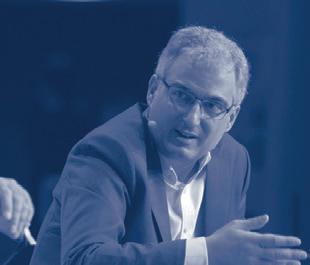




















SPRING / SUMMER / FALL INTERVIEW SERIES P AR IS FI N TE C H F ORU M VI DE O S BIMONTHLY FROM MARCH SEASON2 #PFF FINTECH FOUNDERS podcast FALL EXCLUSIVES SIDE EVENTS WOMEN IN FINANCE P AR IS FINT EC H F O R U M Lunch OCTOBER n e t w o r ki n g p a r t y PARIS FINTECH NIGHT T h e b e s t 2 02 3 Fin& T e c h MAY P A R IS FINTEC H F OR U M DE BAT E & DINN E R NOVEMBER IN PERSON BRAND NEW FORMAT PARIS ∞ NETWORKING 10 0 SPEAKERS 50 0 PARTICIPANTS 4 0 COUNTRIES PARIS ∞ NETWORKING 10 0 SPEAKERS 50 0 PARTICIPANTS 4 0 COUNTRIES PARIS ∞ NETWORKING 10 0 SPEAKERS 50 0 PARTICIPANTS 4 0 COUNTRIES PARIS ∞ NETWORKING 10 0 SPEAKERS 50 0 PARTICIPANTS 4 0 COUNTRIES PARIS ∞ NETWORKING 10 0 SPEAKERS 50 0 PARTICIPANTS 4 0 COUNTRIES
DIGITAL CONTENT & PLATFORM
Payments provider Vitesse is helping a new wave of parametric insurers deliver funds where they’re needed, when they’re needed – often in a matter of hours. Co-founder and CEO Phil McGriskin explains the dramatic impact that can have


Mission crıtıcal
PARAMETRIC INSURANCE 24
TheInsurtechMagazine | Issue 9 ffnews.com
That’s a quote from a distraught small business owner whose comic book shop in Hebden Bridge, West Yorkshire, was inundated by the Boxing Day floods that devastated northern England in 2015. Four months later, still one third of the town’s businesses remained shuttered.
When the waters stirred up by the sequential storms Eva, Desmond and Frank finally subsided, victims across the region were left counting the cost in the billions. Some in Hebden Bridge gave up and moved out. Others figured that the chances of a ‘one in 100-year’ event hitting again in their lifetime was remote and soldiered on. They were wrong: in 2021, Storm Ciara rolled in, causing the fourth major flood in their valley in just eight years.
No matter where they occur in the world, the emotional and financial impact of extreme weather events is severe. And, according to risk modelling experts, the human and economic cost of such disasters is increasing, as rising sea levels and drought increase the frequency and severity of flooding and wildfires.
On any day of the week, the United Nation’s global disaster map pulses with climate-related emergencies – the majority among populations with the least access to financial products that could protect them against the worst happening. Their vulnerability to weather events that are driven by global warming, which is caused mostly by richer nations, led the G7 to launch Global Shield at the recent COP 27 climate talks in November, a plan to provide such countries with pre-arranged insurance and disaster protection funding.
What a Karachi tailor who’s seen his workshop swept away by deadly monsoons in Pakistan and a comic book trader standing knee-deep in sludge in West Yorkshire want most, of course, is affordable insurance that pays out instantly so they can get their lives back on track. And one way that could be achieved is through parametric technology.
Parametric insurance was born in the late 1990s, but leaders in the insurance space didn’t fully start to
offer coverage until the early 2000s when AXA, Swiss RE and Munich Re began to provide policies that paid out according to set limits as soon as a prespecified trigger was met, regardless of the actual loss.
“One of the most exciting things about parametric insurance is the straightforwardness of the claims process,” says Phil McGriskin, co-founder and CEO of Vitesse, a payment provider that bridges the gap between the insurer and customer by offering a range of payment options – including across borders in multiple local currencies – and helps shorten the payout time from months to a matter of hours.
“Since claims are paid automatically upon verifying that a trigger has been met, insurers are reducing costs related to a claims settlement. In a lot of cases, there is no need to send an adjuster out to inspect damage or to waste employee resources in administrative tasks associated with loss adjustment,” continues McGriskin.

“This is a huge cost saving that can be passed on to the consumer. This opens up access to cheaper insurance, which is key to supporting vulnerable communities.”
In December 2022, Vitesse partnered with climate risk insurance platform and Lloyd’s of London coverholder Yokahu, – which had launched its first parametric hurricane insurance in the Caribbean islands seven months earlier – and parametric insurtech FloodFlash. The latter combines computer models, the Cloud and the Internet of Things to provide cover to businesses specifically at risk of flooding.
“Almost every country in the world has a flood under-insurance problem,” says McGriskin. “In 2021, this amounted to $82billion in global losses, which is almost a third of all economic losses due to natural disasters. Clear and defined parameters in parametric policies means customers know what is and is not covered; in a time of stress and crisis, this gives them clarity and comfort in what they will be able to claim for. It also gives the underwriter the ability to know their client needs them and it’s time for them to step into action and help. And that’s where we come in.”
In May 2016, nearly 18 months after the floods that devastated Hebden Bridge, the Association of British Insurers gave an update on how many of those who had cover and who claimed had been paid. Fifteen per cent were still waiting.



25
“The stock is destroyed, we’ve lost everything. We don’t have insurance; we were refused after the floods in 2012. It would cost us £10,000 a year plus £20,000 for excess.”
ffnews.com Issue 9 | TheInsurtechMagazine
Rising anxiety: Businesses in northern England were refused cover or had it priced out of their reach following the 2012 floods
“Ninety per cent of small companies fail within a year if they cannot resume operations within five days,” says McGriskin. “To get their customers back on their feet, insurers need to be able to process the claim and make that payment, as quickly as possible.”
Vitesse’s first experience of paying a full commercial flood claim under parametric insurance followed Storm Franklin, which hit the UK in early 2022.
“Measuring not from claim submitted to claim approved – which is how most insurers would measure it – but from water hitting their client’s building to cash hitting
“Parametric providers have been focussed on insuring natural catastrophes, as they’re easy to monitor and confirm something’s happened. You can put up a flood or wind monitor, and you know that, once a limit has been exceeded, a certain amount of damage will have been done. But now we are seeing parametric insurance being used more and more in vehicle and travel insurance, and beyond,” says McGriskin.

“A lot of vehicles being sold now will be fitted with monitoring systems that record if the vehicle is damaged somehow. The claim will be initiated by the car’s systems and sent off to the manufacturer or the
I still think that has a long way to run. As we do more and more online, the ability to tick a box to have what you’ve just bought covered for a small price is very appealing. And having that one-click digital experience replicated across the claims process, right the way through to payment, is how you win the market.”
As a paytech, Vitesse made its mark by offering a single connection to a network of domestic clearing systems for insurers, financial services companies, e-commerce and other corporates, landing full value payments as quickly as possible with the payee, while also giving its clients a simple, real-time view of their global liquidity.

“Software is intrinsic to the process because it allows everything to happen in real time,” says McGriskin. “Parametric covers rely on businesses like McKenzie Intelligence Services, a software provider that taps into data sources that will allow parametric providers to understand where in the world a problem is occurring, how severe it is, and to what extent the goods that they have covered are damaged.
“But software also includes payments,” he continues. “It’s about making sure that once you have all of this information and you've made your decision, that you’re
their bank account, we achieved a payout for them in five hours and 36 minutes. That makes a material difference to the survival of a business,” says McGriskin.
“Processing cash through the market can be a fairly convoluted process, but through more efficient treasury processing we’re able to ensure there’s the right money, in the right place, at the right time. We can pull funding down from those pots of cash instantly, every time, to service a claim.
“Giving insurers a single platform in which to manage and process payments to reach small business owners within 24 hours, helps people, businesses and communities recover from catastrophe quicker.”
Parametric cover isn’t all about headline-grabbing weather events – although it’s clearly where it can have the most profound impact. Increasingly, the technology is dramatically improving the customer experience in more everyday situations that are faced by both businesses and consumers.
insurance provider. It's paid and settled without the driver having to get involved, which is great for the driver's insurance experience and for the manufacturers themselves because it keeps the customer within their dealer/ repair network, keeping their costs leaner.
“Parametrics also feed down into the travel space, which many of us can relate to – I think we all have experienced delays and cancellations across the past couple of years. Companies have seen this pain point and are building covers around that.
“That’s all the more important with the cost-of-living crisis, when disposable funds are harder to come by and a welcome holiday could be marred by a cancelled flight. An insurer can provide cover to activate upon cancellation so the insured can purchase a return flight home without worrying about how they pay for it.
“Such parametric covers are quite closely twinned with embedded finance. And
not making the customer wait to get their money and that it’s paid in the way that’s going to make the most difference to them. It might be a real-time payment to a card or a multimillion dollar-to-peso payment to a bank account in Mexico. You have to make sure you have that in place because there’s no point in saying I can give you a judgement on your claim immediately, but you get your money in two weeks.
“I would like to think Vitesse is getting a bit of a reputation for innovating across the insurance space and we are uniquely placed to do that,” McGriskin adds.
“We’re looking forward to being the payment partner of choice for parametric insurers. To that end, we’ll continue to innovate, bringing real value to our customers and most importantly, to the end consumer.”
PARAMETRIC INSURANCE 26 TheInsurtechMagazine | Issue 9
Ninety per cent of small companies fail within a year if they cannot resume operations within five days
Disaster relief: Parametrics are key to supporting those most vulnerable to climate events
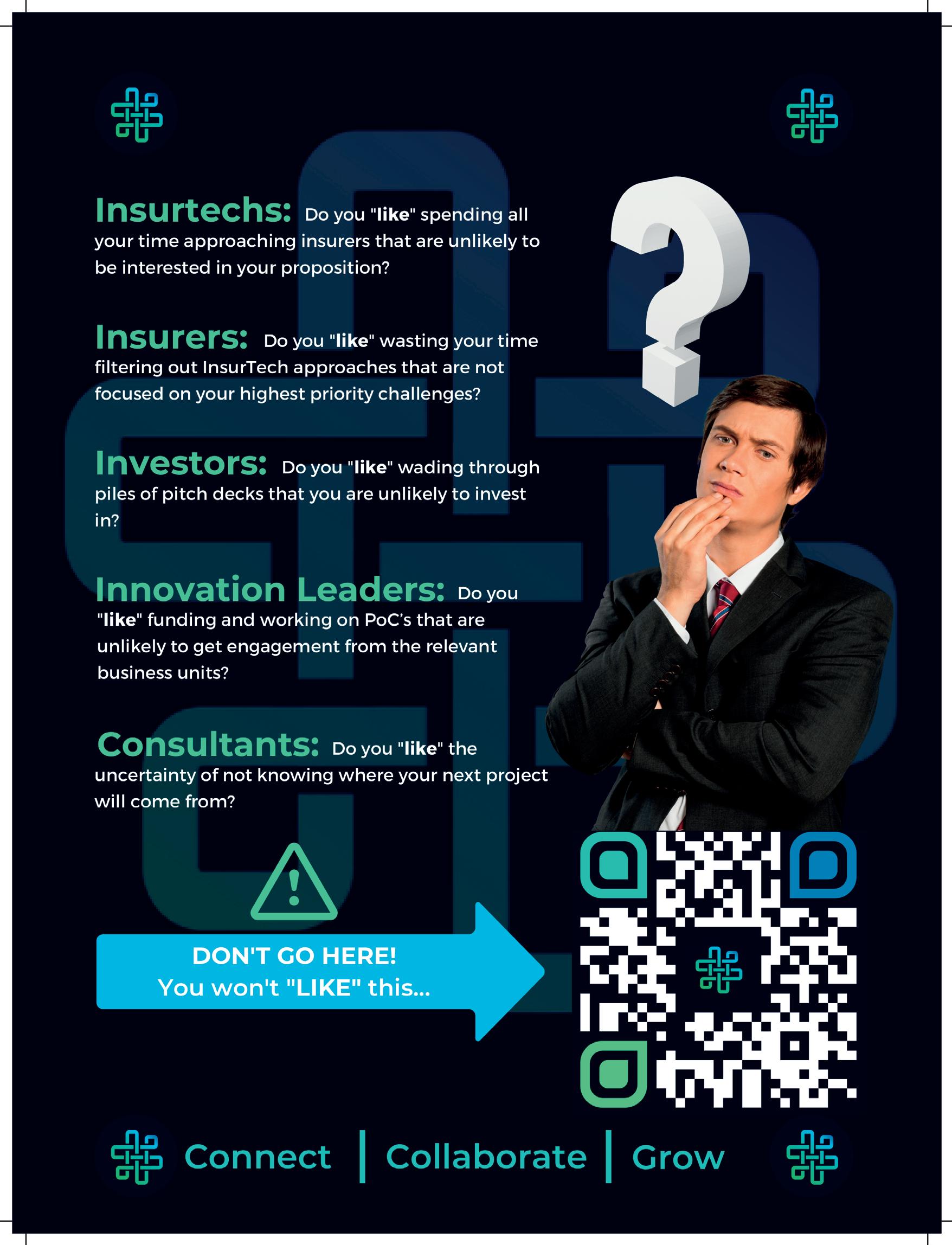
Dan Woods, Founder and CEO, Socotra, sets out the key steps for launching a successful insurance product

Around the world, the insurance industry faces myriad challenges, ranging from a rapidly evolving technology landscape, to minimising product maintenance costs, to adapting to consumer behaviours and preferences, shaped by today’s digital-first world.

Against these growing headwinds, it’s more important than ever that insurers remain competitive and innovate at speed. The majority clearly agree. In a KPMG study that interviewed 1,325 chief executives across 11 major sectors, including insurance, 75 per cent said that they have an aggressive digital investment strategy that’s intended to secure first-mover or fast-follower status.
The insurance market may be ripe for disruption, but actually capitalising on the opportunity can be difficult. The industry maintains high barriers to entry, heavy regulatory obligations, and is populated with well-established competitors. Survival for carriers depends on their ability to launch new products and services fast, and on budget, while tailoring them to evolving customer demands.
The traditional incumbent approach of spending several years and millions of dollars on product development isn’t viable in today’s fast-paced insurance environment. It’s not only inefficient – it also leaves your business trailing the competition.
Insurers must forge a new path, powered by agile methodology. By maximising resources and continually iterating towards a best-fit product, an agile approach can be a significant differentiator for insurance innovators. But in insurance, agile is still a relatively new and uncharted concept.
At Socotra, which was founded in the US in 2014 and is currently expanding throughout the UK and European markets, we’ve spent time in the trenches with many of the world’s top insurers, giving us insight into what makes for a successful product launch.
Here are five hard-learned lessons – including from our highly competitive home market in the US – which both carriers and insurtechs can use to gain an edge.
In


1 Go live quickly with a minimum viable product (MVP) Historically, insurers have taken a rigid waterfall approach to bring fully developed products to market. Today, you can’t afford to take such a lengthy and expensive route to product development. Instead, you must get live fast with an MVP and start selling policies
– because until you have a customer, you are only working with a market hypothesis and not actual data.
Learning moves exponentially faster once a product is live. By viewing the product launch as a starting point in the development journey, not the destination, insurers can test market assumptions by gathering data from real prospects and customers. They can then take what they learn and quickly iterate to develop a more customer-centric product.
Generally, the minimum features required for an MVP are data collection (to capture policyholder information), rating (to determine premiums), underwriting (to assess risk), documents (to support contracts and legal requirements), and payments (to collect premiums and pay out claims).
Not all MVP features need to be fully built and automated. Avoid delaying a launch so that you can build out a function that can just as easily be done in Excel or another manual tool.
2 Be hyper-responsive to customer feedback and needs
Your MVP has reached its Day 1 milestone: selling policies. Now it’s Day 2, you’ll have a host of fires you’ll need to put out in terms of smoothing processes and meeting customer needs. While an agile approach accelerates your learnings and creates a customer-centric feedback loop for your
AGILE DEVELOPMENT 28
TheInsurtechMagazine | Issue 9 ffnews.com
insurance, agile is still a relatively new and uncharted concept
product, it also demands responsiveness from your team, post-launch.
Renewals, for example, is a common fast-follow feature. Most customers will renew monthly or annually, giving you ample time to build out this feature. Most types of cancellations can also likely wait until Day 2 (unless you have an admitted product like personal auto insurance, where it’s required).
3

Iterate on manual processes
Agile methodologies concentrate on minimising waste while maximising results. Many startup leaders mistakenly believe automating as many processes as possible will help them stay lean and save time. However, in certain instances, it makes sense to perform a quick fix instead of automating.
In one example, a customer went live without automating a data-source integration, which meant manually typing. As a result, they discovered that the data source wasn’t very good and they switched to another within a few weeks. Good thing they didn’t delay launch to automate integrating with the original data source. Innovating bad or ineffective processes with automation can result in positive results, such as more easily scaling the business. Manual processes aren’t always bad. They’re crucial tools to apply the feedback signals received from customers. They enable you to tweak, substitute, or eliminate inefficient processes quickly and affordably. In fact, manual processes are the easiest and simplest to iterate on, so avoid prematurely automating a manual process before validating the benefit of doing so.
4 Prioritise like a maniac
You’ve gone live fast, responded to feedback with feature updates, and preserved manual processes to maintain your focus on the most mission-critical objectives. But where you spend your time, talent, and capital still determines your survival and growth, even as your resources expand. Ruthless prioritisation will allow you to continue making product improvements while supporting customer and market demands.
Automating manual processes can unlock massive gains in productivity, performance, and customer satisfaction.
Yet knowing which processes to replace, and in what order, is more complicated than it seems, so make sure you have a prioritisation roadmap.
Different products demand different prioritisation. For example, claims may surface as a top priority for an auto product, yet it will be a lower priority for a life insurer, which may not receive a claim until months after launch.
5 Choose technology that enables agile methodology Agile methodology requires agile technology. That means using a multi-service architecture that can maximise the impact of lean operations, rather than a monolithic incumbent system that prevents a nimble team from adapting to market demands in a timely, cost-effective, and non-disruptive manner.
EMBEDDED DRIVER INSURANCE
Hailing Success
Socotra helped one of the top three global insurers to use the methodologies discussed here to launch an embedded income protection product for drivers of a leading rideshare company.
Accessed directly through the rideshare app, drivers can sign up for flexible business interruption coverage in a few clicks, and their premium is then automatically collected from completed trips. Socotra enabled the insurer to implement a new technical platform and launch the product in only six months –three times faster than it’s likely to have taken with a legacy core system.
The implementation team was made up of just 10 members, thanks to Socotra’s easily configurable platform. The Socotra Connected Core leverages Cloud, open APIs, and a powerful data model, giving insurers the freedom and reliability to
Multi-service architecture enables you to take advantage of best-of-breed technology to create a dynamic, always-up-to-date platform with enormous flexibility and resilience to change – it can put leading technology and services at your fingertips without custom coding or downtime for upgrades.
Multi-service platforms allow you to tailor your own platform to meet market demands quickly and easily, reducing implementation time and costs whilst making it simpler to accelerate product launches, test and iterate a live product, and begin raising additional capital.
The insurance landscape is modernising rapidly, with innovative new products being launched at remarkable speed. Over time, this trend will only accelerate. The five lessons outlined here will enable insurers to keep up with this pace of innovation
launch products through any distribution channel, while the Socotra App MarketPlace offers a click-to-run experience that enables insurers to add new features and third-party software without long and costly integration projects.
The drivers’ business interruption product launch was successful, both technically and commercially, achieving a five per cent penetration rate within six months. To date, more than 10,000 policies have been sold to drivers through the ridesharing app.
The run cost for the insurer is significantly lower, compared to that of a legacy solution because the Socotra platform is not only built to accelerate product development and improve customer experiences, but also to reduce ongoing costs.

29
ffnews.com Issue 9 | TheInsurtechMagazine
Lessonsfromreally a hard market

Ben Rose, Co-founder and President of the reinsurance platform Supercede, looks back over a tough year and considers how better insight into timely data could address reinsurer concerns going forward

Long before Hurricane Ian reared its ugly head, my colleague Jerad Leigh, Supercede’s CEO, wrote a timely piece outlining three lessons for cedents looking to get the best results from their reinsurance placements, including how technology can help.

Have those lessons changed, following one of the hardest January 1st renewal seasons in recent memory? With the earth moving beneath their feet, what did successful cedents rely upon to get solid outcomes in distinctly challenging market conditions?
The latter half of 2022 really was a run-up to renewals like no other. On the one hand, we saw demand for reinsurance increase in response to macroeconomic conditions that drove greater loss/cost volatility and inflation of insured values. On the other, we saw supply shrink dramatically against its previously climbing trend, with Aon estimating that global reinsurer capital declined a whopping 17 per cent.
By the time the industry gathered for its annual rendezvous in Monte Carlo in September, reinsurers had started talking up rates – and that was before Hurricane Ian, which arrived two weeks later, an event estimated by Gallagher Re to have an insured cost of US $55billion. It materially drove the US $140billion total for 2022, making it the fifth consecutive year to have crossed the US $100billion threshold. With significant reductions in shareholders’ equity already impacted by changes of price in reinsurers’ investment portfolios, it’s hardly surprising that a number of prominent reinsurers exited the market altogether prior to renewals.
It would be a stretch to say that the industry was in panic by the time of the Baden-Baden meeting, one of the key events in the reinsurance calendar, but there was certainly an excited confusion created by blending a wholehearted return to face-to-face dealmaking with a near-total absence of quotes, which would normally have started to trickle through by then. So there followed a challenging game of musical chairs, throughout which the retro market had yet to put out any chairs.
Facing a market already demanding rate rises on the basis of a retrospectively under-budgeted pandemic, changing climate and war in Ukraine, the January 1, 2023 renewal season was further impacted by the discovery, in reviews of prior year results, of the unplanned prominence of secondary perils in loss runs. While this was tough for cedents – who faced unexpected negotiations about what might be included or excluded in their coverage for 2023 – it was little better for reinsurers, who found
REINSURANCE 30
TheInsurtechMagazine | Issue 9 ffnews.com
Storm force: Hurricane Ian contributed to reinsurers’ unease
themselves under the microscope by both investors and rating agencies.
Despite all this drama, did Jerad give good advice to cedents, back in June? Absolutely. Here’s a reminder of his recommendations.
1 Be faster, to get to market early I couldn’t agree with this one more. In fact, following the requirement of many reinsurers for cedents to explain how they were mitigating the impacts of secondary perils and inflation, we shouldn’t limit this characteristic of being fast to reaching market early. Rather, we should see it as a trait of nimbleness: empowering the buyer to address reinsurer concerns rapidly and to support conversations with data, even when market conditions are evolving.
Data preparation is too often a once-per-year, months-long activity, which is impossible to repeat in the throes of renewal negotiations. Cedents using tools such as Supercede operated with a substantial advantage during the January 1, 2023 renewals by bringing this preparation cycle down to a matter of days or weeks.
2 Present cleaner, clearer data
Once again, Jerad is on the money in
ASCOT GROUP
highlighting the importance of data quality for effective reinsurer relationships.
In his January 1 renewals lecture for the CII’s Insurance Institute London, Aon’s Mike Van Slooten drew particular attention to the same lesson, arguing that for cedents facing harder markets ‘transparency and data quality are now critical’.
Many cedents can only provide a blurry or outdated impression of their portfolios,
to be treated differently. In doing so, they avoid the worst of reinsurance pricing cycles.
3 Cede smarter
The potential for horse-trading deals during the most recent renewal season was enormous: a cedent’s ability to pair the bitter pill of their catastrophe portfolio with more palatable exposures from casualty and speciality books would have gone a long way towards helping a reinsurer digest more moderate rate change expectations. But it’s not easy to pull off.
which makes it challenging to avoid being the victims of broad reinsurer assumptions. Conversely, buyers who are able to take a more dynamic approach to submission exhibit creation are able to deploy data as evidence for differentiation, and so can present an effective story for why their case deserves
Unfortunately, many cedents were hamstrung by the challenges of grouping and ungrouping portfolio views that had for years or decades been presented only through a single, consistent lens. Attempts to juxtapose profiles, bordereaux, loss runs and rate changes across subsections at short notice saw outwards analysts quagmired in a sticky spreadsheet spaghetti.
As Jerad said many months before this memorable renewal season, now is the time when market leaders will take the opportunity to use technology to win the reinsurance race, by being smart, cleaner and faster.
A RADICAL IMPROVEMENT IN DATA PREPARATION WITH A DIGITAL REINSURANCE TOOL
Last year, Ascot Group’s Ceded
Re team began the familiar task of collecting vast amounts of complex submission data to ensure placements were out to market on time.
Supercede was utilised for sample submission pack data to determine how data preparation could be vastly streamlined through its smart import wizard and powerful validation tools.
THE CHALLENGE
Quantity and management of data created concern around binding placements in timely manner.
The Ascot team was faced with collating considerable quantities of data to form submission packs for each of its global portfolios and entities.
Cleansing data was time-consuming and meant data cuts had to occur long before treaty renewal.
The data was also owned by various personnel within the organisation, with varying levels of detail, depending on the line of business.
Reconciling Ascot’s internal and broker data required significant communication between parties to ensure matching of information and correct interpretation.
THE SOLUTION
Supercede enabled consolidation, formatting and accessibility of data. After completing a trial of Supercede’s Packs product, Ascot has entered into a pilot scheme in order to assess the capabilities of Supercede in real placements with greater complexity.
The teams from Ascot and Supercede are working to get renewal data into the Supercede platform for Ascot’s mid-year renewals, which include property and casualty renewals.
THE RESULT
An opportunity for faster placements, easier data management, and manual review reduction.
The Ascot team wishes to further explore how Supercede is able to help get their placements bound in a faster time frame
through its powerful data management and automation tools.

Diminishing the need for back-and-forth clarification with broking teams resulted in a dramatic reduction in time for submission processes. This applied both in terms of the initial cleansing and broker interaction.
THE CONCLUSION
In future, Ascot will be able to cut data at a later point to provide more up-to-the minute information.

Improvements in data management enabled easy reconciliation of data, so more time could be spent on deal structure and finding the best markets to support the renewal.
“Supercede was very good at organising and managing our submission data,” says Greg Waide, Ascot’s head of reinsurance. “Having one workspace for our packs, which we can handily share with our brokers, makes it very easy to get everything sent off in time.”
31
ffnews.com Issue 9 | TheInsurtechMagazine
Many cedents can only provide a blurry or outdated impression of their portfolios, which makes it challenging to avoid being the victims of broad reinsurer assumptions
DIFFICULT CONVERSATIONS


INSURTECH: PROFILE 32 TheInsurtechMagazine | Issue 9 ffnews.com
Former hostage negotiator turned insurtech entrepreneur and now Head of Desktop Solutions at The Cotswold Group – an Allied Universal Company
– Tara Shelton’s career has been one long pursuit of the truth
Group, an Allied Universal company. Difficult conversations are her bread and butter and have been since she completed a psychology degree 30 years ago and entered the British police force. As a young officer, she says: ”I immediately fell in love with the job – talking with different types of people on the street and finding ways to connect with them”. And she developed a particular interview style, based on her belief that ‘you can still have compassion when advising someone that they’ve done something wrong’.
Her excellent conversational skills caught the attention of her superiors. “By that stage I had built a reputation as a police officer of being able to negotiate with people whilst ensuring no one got hurt in the process. Of c ourse, I think the psychology fed into that capability, that kind of mind set. But I can honestly say I feel naturally blessed with that ability also,” she says.
Shelton passed the tough assessment to enter the most high-stakes conversation of them all – enrolling in the police national hostage negotiation course. She went on to deal with cases of international extortion, kidnap and ransom, as well as other major incidents, shouldering a terrifying degree of responsibility where every carefully weighed word mattered. “But I absolutely loved it,” she recalls.
When Shelton left the force after 15 years of service in 2008, she talked herself into a new but not entirely unrelated career as Founder and CEO of i-Cog, helping insurance firms – who in the UK face an estimated 300 bogus claims a day – navigate conversations with customers who might, or might not, be trying to defraud them.
“i-Cog’s business plan started on the back of a Post-it note in a Starbucks in Leamington Spa,” says Shelton. “It was based on the idea that in my opinion, claimants deserved a better customer
experience when engaging with anyone asking questions of them about their claim.”

This approach set out to help insurers identify those customers who were giving misleading information while simultaneously improving insurance companies’ overall customer service ratings with those customers who had nothing to hide.
Shelton’s firm achieved this feat via three key services: claims validation, claim investigations, and staff training. Technology was instrumental in the delivery of i-Options, the suite of services the firm would release back in 2014 – but it was in Conversation Management where i-Cog would excel. Here, Shelton’s background in handling potential wrong-doers the right way made all the difference.
“If you think of our natural human behaviour, no one discloses information they wish to keep private to those they don’t trust, especially if that person is perceived to be in a position of authority,” she says. “If you intentionally
courts, is a remarkable result from one single conversation.
“At the time, the market did not see how that was possible,” Shelton says. But with her involved, 42 per cent of policymakers, on average, asked to withdraw their fraudulent claim. Some insurers accepted this offer, some invoked the fraud condition, but all had their policies voided.
Success in resolving claims with little adversity put Shelton on the insurance market map. Doing it with an unprecedented 0.4 per cent complaint ratio made it an unmissable feature of the risk identification landscape. While it would be an oversimplification to say that the secret ingredient was compassion, it’s clear that i-Cog’s innocent-until-proven-guilty approach won the hearts of insurer clients.
Insurance fraud is a thorny and hugely costly issue within the global industry. In 2022, The Coalition Against Insurance Fraud estimated that fraudulent claims cost US consumers $308.6billion a year. It’s no surprise, then, that insurers invest at least £200million a year on technology to identify fraud.
ECONOMIC FACTORS
Whenever families struggle to make ends meet, as in the current climate, insurers face an inevitable increase in fraudulent claims. But will they know it?
or unintentionally make a claimant feel like a suspect when working in that space, you’re never going to get to the heart of the matter. But if you make customers feel safe, they’re more likely to disclose insurance fraud to you. They will emotionally and morally connect with you and will be more likely to say, ‘actually, I think I’ve made a mistake – what should I do?’.”
That about-face by claimants who might otherwise have doubled down on executing fraud, perhaps costing them their reputation, cash and even their liberty, while the insurance firm picked up a huge bill for investigating and prosecuting them through the
“Often, an external threat creates scenarios in which people do something they usually wouldn’t contemplate,” explains Shelton. “They’re under pressure and need to find money, as money pays bills. People can think, ‘I’ve never claimed on this insurance policy, if I claim on it now it’ll tide me over and I can breathe again.’ It’s a thought process experts call ‘fraud rationalisation’ – rationalising doing something wrong as a necessity to survive when financial pressure truly exists.”
Such claims might take the form of organised fraud, when a policyholder does something deliberate to make a claim, such as intentionally destroying property. More common though, is opportunistic fraud, whereby a policyholder may exaggerate a legitimate claim with the intention of pocketing the pay-out. These are harder to spot.
33
ffnews.com Issue 9 | TheInsurtechMagazine
If you make customers feel safe, they’re more likely to disclose insurance fraud to you. They will emotionally and morally connect with you
If you’re caught behaving badly, best hope it’s by someone with the temperament of Tara Shelton, Head of Desktop Solutions at UK’s The Cotswold
While organised fraud is associated with criminality, opportunistic fraud is often regarded as a one-time behaviour from those whose profile wouldn’t usually raise red flags with insurance firms. Such opportunism is also harder to identify because the amount claimed tends to be low and the claimant does not possess a previous claims history.

i-Cog’s goal was to make the assessment of claims commercially viable, regardless of their value. That meant rapidly settling genuine claims, using intelligence sources to check each one against risk triggers and fraud indicators, while riskier claims would be handed over to Shelton and her expert handlers, where her Conversation Management techniques would kick in.
the most impressive credentials, but that same doctor still cannot take an image from inside your body like MRI technology can. We need technology to be able to do things that we, as humans, can’t. We are naturally swayed by prejudice and bias, no matter how hard we try not to be.”
Trained hostage negotiators may know how to talk someone down from making a critical mistake, but they aren’t mind-readers. Nor is the latest fraud-screening technology, for that matter.But with the release of a unique, AI-enabled voice analytics technology from Clearspeed, introduced to the UK insurance market by Allied Universal in 2021, Shelton designed a new offering from The Cotswold Group called ‘i-insight’. ‘i-Insight’ is a
beep you understandably are followed up with by an agent. That follow-up process is what my years of experience and The Cotswold Group are there for. Combining technology and highly trained humans is the perfect marriage for a customer-centric claims validation process.”
That ‘airport beep’ is dependent on oral answers provided to a few questions, which claimants can complete at any time, in any place and in any language. With an above-97 per cent accuracy – unheard of in the industry, according to Shelton.
The benefits of i-Insight for genuine claimants, meanwhile, are as important as the technology’s risk identification prowess. “It’s all about convenience for the customer,” says Shelton. “If you pose no risk, you’re going to remain with your existing insurer, because you feel satisfied with the speed, convenience and self-serve approach.”
This chimes with Shelton’s compassionate interview technique – but will technology eventually come to replace it?
“There’s a danger in seeing technology alone as a silver bullet. Technology can lead to faster settlements on valid claims, but I don’t see it ever replacing the unique human skills of being able to display empathy, build rapport, earn trust and

i-Cog was utterly delighted to join The Cotswold Group in April 2020, with Shelton supervising her company’s integration under the title of Head Desktop Solutions. She felt the entire organisation of Allied Universal perfectly mirrored her morals, integrity and work ethic. i-Cog was by now a long way from that Starbucks Post-it note. The Cotswold Group has been providing claims investigation and intelligence services since 1990, working across all insurance industry sectors. The firm counts some of the world’s largest insurance companies as clients, delivering market leading results by using its desktop investigation process.
As a valued member of The Cotswold Group, Shelton is looking at how technology can be further leveraged to improve the claims validation process because, despite her focus on empathetic, human communication, she’s no Luddite.
As she puts it: “You can have the most qualified doctor in the world and who has
revolutionary three-stage, end-to-end claims process that has been roundly hailed as a game-changer for the global insurance industry.
Deploying Clearspeed’s technology at Stage 1 through an automated voice questionnaire, it simply and accurately performs the task of risk assessment, providing unique risk insight that complements existing data. As Shelton explains, this Stage 1 provides an initial screening of any claim to determine whether it requires escalating to i-Insight’s Stage 2. And with impressive results to date, The Cotswold Group is wholeheartedly shaping the market.
“Think of a metal detector at the airport: if it doesn’t beep, you’re safe to fly. If it does
then morally influence the fraudster to make the right choice. Technology will, in my view, never be able to plan, hold, manage, assess and conclude a difficult conversation alone,” she says. “You cannot decline a claim based just on data. You still need an expert human to make those important decisions.”
The i-Insight process is breaking new ground and is impressing both insurers and their genuine customers alike. “I can see it becoming standard, the must-have across the industry. Why would you not want a process that meets customer’s self-serve expectations, clears claims to pay with superior accuracy, positively impacts customer surveys and removes all blind spots on opportunistic fraud?” says Shelton.
INSURTECH: PROFILE 34 TheInsurtechMagazine | Issue 9
Humans in the loop: AI can’t and won’t replace uniquely human skills, says Shelton
There is a danger of seeing technology alone as a silver bullet. Technology can lead to faster settlement on valid claims but I don't see it ever replacing the unique human skills of being able to display empathy, build rapport, earn trust
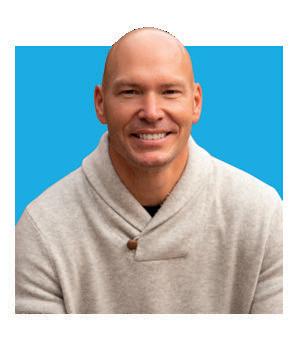

Ohio’s Economic Development Corporation
KEY TAKEAWAY: With capital in shorter supply, insurtechs will have to focus on generating revenue rather than hitting softer KPIs if they want to qualify for the next funding round
ECONOMIC SLOWDOWN With inflation in high single or double digits across many of the world’s economies and a real risk of many entering, if not already in, recession, insurers will continue to be feel the blowback throughout 2023. One consequence of the cost-of-living crisis across all lines of business will be that the recent increase in fraudulent customer behaviour is likely to be sustained – both legitimate claims being exaggerated as well as an increase in falsified claims, particularly for lost gadgets. The challenge here for insurers who are focussing heavily on driving down settlement times, is how they put fraud mitigation in place so that legitimate customers are fast-tracked ahead of the others – and all without causing undue friction for a potentially innocent claimant.
As insurers put greater emphasis on automation to address the problem, we are likely to see a shift in the way that people are deployed across areas such as first notice of loss.
Meanwhile, motor insurers face a unique set of problems. Second-hand vehicle prices have already risen significantly, by more than 40 per cent in some cases. This, coupled with a shortage of parts, such as electronic sensors, is driving up the cost of vehicle repairs. But when a market is in recession, it’s difficult to raise premiums as consumers focus more on saving money and getting covered than finding the most appropriate cover. This is likely to result in an increase in the number of uninsured vehicles on

our roads, which leads to a whole other set of problems when prosecuting claims.
TALENT SHORTAGE Insurers will spend this year looking outside of the industry for tech solutions that are being used to address similar challenges to their own. They will also focus on attracting people from other sectors who can view existing propositions and processes through a new lens. That said, it’s always been a challenge to position insurance as an exciting career opportunity. And while insurers are broadening their recruitment strategy, they are also likely to see an even greater proportion of younger staff exploring other opportunities that give them greater job satisfaction and flexibility. How they address that brain drain will be a key factor this year, especially as the trend for very senior people to take early retirement shows no signs of slowing. Many have moved into more of a portfolio career, spreading their time across multiple businesses – although we are seeing a huge increase in the number joining insurtechs as advisors on a part-time basis, so there is a ‘win’ there.
GROWTH STRATEGY With capital in shorter supply, insurtechs will have to focus on generating revenue rather than hitting softer KPIs if they want to qualify for the next funding round. We are likely to see some early-stage companies being acquired by cash-rich insurtechs as they try to develop more end-to-end propositions. At the same time, legacy insurers will take the opportunity to capture cash-strapped startups as they focus on developing propositions that are more relevant to customers, particularly younger consumers and the gig economy, which they find hard to reach and service.

PREDICTIONS: PART 2 36 TheInsurtechMagazine | Issue 9 ffnews.com
MANJIT RANA , CO-FOUNDER & CEO, INSURTECH SCOUT
More citizens are realising that they are personally responsible for their future health and retirement costs… This realisation is creating opportunity for insurers McKinsey, Global Insurance Report 2023: Reimagining Life Insurance
KEY TAKEAWAY: Insurance companies adopting AI in the most strategic ways will excel across many areas of their business
The rapid adoption rate of AI is what I am most excited to see grow in 2023, not just in insurance, but in all industries. Whilst I don’t foresee robots replacing employees, perhaps the humans (and companies) best utilising AI will replace those who aren’t.
Insurance companies adopting AI in strategic ways will excel across many areas of their business, from underwriting, claims processing, fraud detection and personalised pricing, to enhanced chatbots and virtual assistants.
It’s important to note, AI technology can be complex and difficult to understand, and AI systems are only as good as the data they are fed, so there is a risk of bias or incorrect assumptions if the data is incomplete or inaccurate.
There’s also the ethical debate around AI in insurance to consider. At the Insurtech Insights conference at The O2 in London on March 1 and 2, I’ll be joined by the Chartered Institute for Insurers for a live sparring session with ChatGPT, the advanced conversational chatbot that redefined what AI assistants can do when it was released in November 2022. ChatGPT was followed in February by the soft launch of Google’s Bard, which uses similar next-generation capabilities and Microsoft’s Bing. These will raise the stakes in AI-assistance.
We’ll follow the ChatGPT demonstration at the show with a discussion on the broader issues of fairness, bias and morality which those companies and industries that embrace AI must now address. It’s an important debate that we all need to engage in.
KEY TAKEAWAY: Hot technologies will be software as a service (SaaS) or distribution solutions that focus on client experience
We all saw the mess that SouthWest Airlines got itself into following Storm Elliott, which brought severe weather to the United States in December and was estimated to have caused $5.4billion in insured losses across 42 states.
Around 60 per cent of SouthWest’s flights remained rooted to the ground, thanks to a technology meltdown that wrecked internal communication and left tens of thousands of passengers stranded. Six months before, it had made what turned out to be a fatal decision to close its call centre in favour of automated assistants – who couldn’t handle the crisis.
It was a lesson for all CEOs: if you get it wrong by investing too much or too little corporate venture capital (CVC) in digital initiatives, no one will blame you as we are all just trying to figure out this whole insurtech/fintech space. But if you get your client experience wrong, then there’s a direct impact on your bottom line, your retention and, if it plays out on social
KEY TAKEAWAY: 2023 will be the year where a shift from being a static-based industry to a dynamic-based industry catalyses
We can focus on technology, product and business model advancements, however, I’m starting to observe patterns that are macro in nature but which tend to be buried deep in the roots of the industry and contribute to the fog of innovation.
So, my top prediction is that the current forces of economic environment, frequency and severity of events and capacity constraints will propel us to burn off that fog and unearth this rooted trend. 2023 will be the year where a shift from being a static-based industry to a dynamic-based industry catalyses.


Let’s break that down. What does static mean? ‘Lacking in movement, action, or change’. What does dynamic mean? ‘Of a process (or system) characterised by constant change, activity, or progress’. Traditionally, our industry did not have the real-time processing or data available to it, which resulted in all of our processes and functions being built to be static or point-in-time. The transformation of capabilities to be real-time, streaming-enabled (across every function, line of business and segment) has created the ability to continually evaluate precise and identifiable risk at all levels. We have seen traction of this in some areas like usage-based, embedded and cyber insurance. The trend in 2023 will be to extend this dynamic capability deep into the traditional functions and business lines. This will enable much greater adoption of insurtech capabilities with insurance carriers, which will create a platonic shift in creating newly defined products and solutions for society at large.
media, your reputation. Then it could be the senior leadership’s jobs and pensions at risk, as several at SouthWest may find following a Senate hearing this month (February).
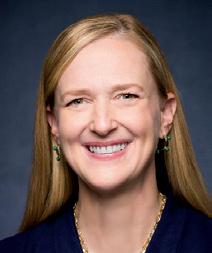
With that in mind, hot technologies for 2023 in the insurance industry will be software as a service (SaaS) or distribution solutions that focus on client experience, which big carriers can plug in and integrate.
In terms of investment strategy, with the SPAC IPO looking like a thing of the past, many of the 8,000 insurtech founders in our space have had to adjust their exit plans. Venture capital and private equity funding are offering slim pickings, so we will see more founders take the M&A routes. Sherman’s & Co, William Blair, Dowling Hales, Oppenheimer, Stonybrook, and many other insurtech/ insurance investment banking firms will have a record year.
And, circling back to the events that caused SouthWest Airlines such grief, geo-focussed insurtech and customer-service-focussed insurtech in particular will be bid up and purchased.

37 ffnews.com Issue 9 | TheInsurtechMagazine
EY
recessioninflationWhileand will hurt insurers, in the form of higher claims costs and reduced demand, higher interest rates may provide an earnings tailwind
Global OutlookInsurance 2023
Insurers are likely to be judged not just by plans laid out in their annual sustainability reports, but by how their initiatives actually limit the impact of climate change Deloitte Insights 2023
BRADLEY COLLINS, CHIEF COMMERCIAL OFFICER, INSURTECH INSIGHTS
LISA WARDLAW, INSURANCE DIGITAL STRATEGIST
JEFF SHI , FOUNDER, INSURTECH GROUPS
The Consumer Technology Association’s (CTA) annual trade show is the geek gathering of the year. From lunar terrain vehicles to smart bird feeders, it runs the gamut of disruption, featuring products that are beyond-blue-sky as well as the more banal.
But one particular exhibit at this year’s event in Las Vegas got me thinking about the increasingly important relationship between tech – specifically medtech – and insurance. It was, you might say, a moment of relief. And here’s why.

We are not just teetering on the precipice of a new world where medtech and insurtech walk hand in hand, we are hurtling towards it at breakneck speed.
The medical profession was for a long time locked behind a wall of knowledge, but with the hive mind that we call ‘the internet’, and AI technology on almost every device that we own, doctors are no longer the gatekeepers to information about our bodies. Instead, it’s the multibillion dollar pharmaceutical industry putting up the walls, hiding medtech behind unreasonably inflated costs. In America, getting your heart checked with an electrocardiogram costs nearly $500 if you’re unlucky enough not to have insurance.
But the consumerisation of medtech has started to shake things up, driven by technology companies capitalising on our desire for reliable home diagnostics at an affordable price. There are new devices like the FreeStyle Libre 2, a connected diabetes monitor that anyone can purchase for around £50, or the Ortiv diabetes tester, which instead of using needles to draw blood, utilises a high-powered precision laser for testing.
Although these devices are becoming cheaper and direct-to-consumer, they
are niche. Smartwatches however have reached a much wider audience in health and wellbeing. Steps are counted, heart rates are measured, blood oxygen levels are recorded. You can take an electrocardiogram and even see how many times you’ve rolled over in your sleep. And all of this is digitised into tangible data that we can act upon.
The internet is littered with stories about how smartwatches have led to the diagnoses of severe illness, such as that of David Last, who noticed that over a few weeks, his smartwatch recorded a heart rate below 30bpm an alarming amount of times. On visiting his doctor, David discovered that he had a lifethreatening, third-degree heart block, which doctors were able to treat.
Amazing as this story is, smartwatches are still limited to sensors outside the body, and rely on algorithms to fill in the gaps. When we go to our doctor with a serious complaint, they’ll certainly use smartwatch data, but they’ll also look
at two other things that would be impractical for a smartwatch to take – your blood and urine, both of which are unreadable without a laboratory… that is, until now.
The Withings U-Scan, has been making a huge ’splash’ in the medtech world since its introduction at the CTA’s Consumer Electronics Show in January. This hockey-puck-sized device sits inside the toilet bowl and analyses your urine for hydration and nutrients as indicators of your lifestyle, sharing reports and recommendations based on its readings to your phone.
But how could this impact insurtech? Companies like Vitality are already using data from smartwatches to tailor insurance products and are offering financial incentives to consumers who keep to an activity goal. It wouldn’t be too hard to think of ways that data from U-Scan could be used to make assumptions about the customer when tailoring insurance products. Data such as alcohol content, hydration levels and even nutrition could all be used as indicators of risk for the insurer, allowing for better assumptions and more tailored products.
Although no company is yet leveraging this advanced technology, it’s only a small leap from where we are now. And, as more medtech that was once confined to a lab is consumerised, insurers would be foolish to ignore the immense opportunity to improve pricing, avoid risk, and build better relationships with customers through its adoption.

Reading room:Advanced toilet tech could give us instant health reports



Flush ideas
LAST WORD: MEDTECH 38
This device sits inside the toilet bowl and analyses your urine...
TheInsurtechMagazine | Issue 9 ffnews.com
Stuart Thomas salutes a product that could give insurers some (very private) clues to our health
Let’s talk about the next wave in AI, Machine Learning & Managed Services
SmartStream’s fully integrated suite of solutions and platform services for middle- and back-office operations are more relevant than ever – proven to deliver uninterrupted services to critical processes in the most testing conditions. Their use has allowed our customers to gain greater control, reduce costs, mitigate risk and accurately comply with regulation.
With AI and machine learning growing in maturity, these technologies are now being embedded in all of our solutions and can be consumed faster than ever either as managed services or in the cloud.

Simply book a meeting to find out why over 70 of the world’s top 100 banks continue to rely on SmartStream.
info@smartstream-stp.com
smartstream-stp.com
INSURANCE BROKER SOFTWARE: BROKING EVOLVED
• Manage your entire insurance distribution lifecycle on one platform - from quotes and upselling to accounting and claims

• Leverage data-driven intelligence to build customer relationships and drive growth
• Automated insurance workflows help you drive greater operational efficiency
Leading brokers demonstrate measurable results
Cross-Sell Policy Sales Renewals Back Office Efficiency Faster Broker Onboarding Claims Capacity +40% +63% +30% +60% +75% +24%
WELCOME TO THE ONLY CLOUD-NATIVE, DATA-DRIVEN INSURANCE DISTRIBUTION PLATFORM




































































































































